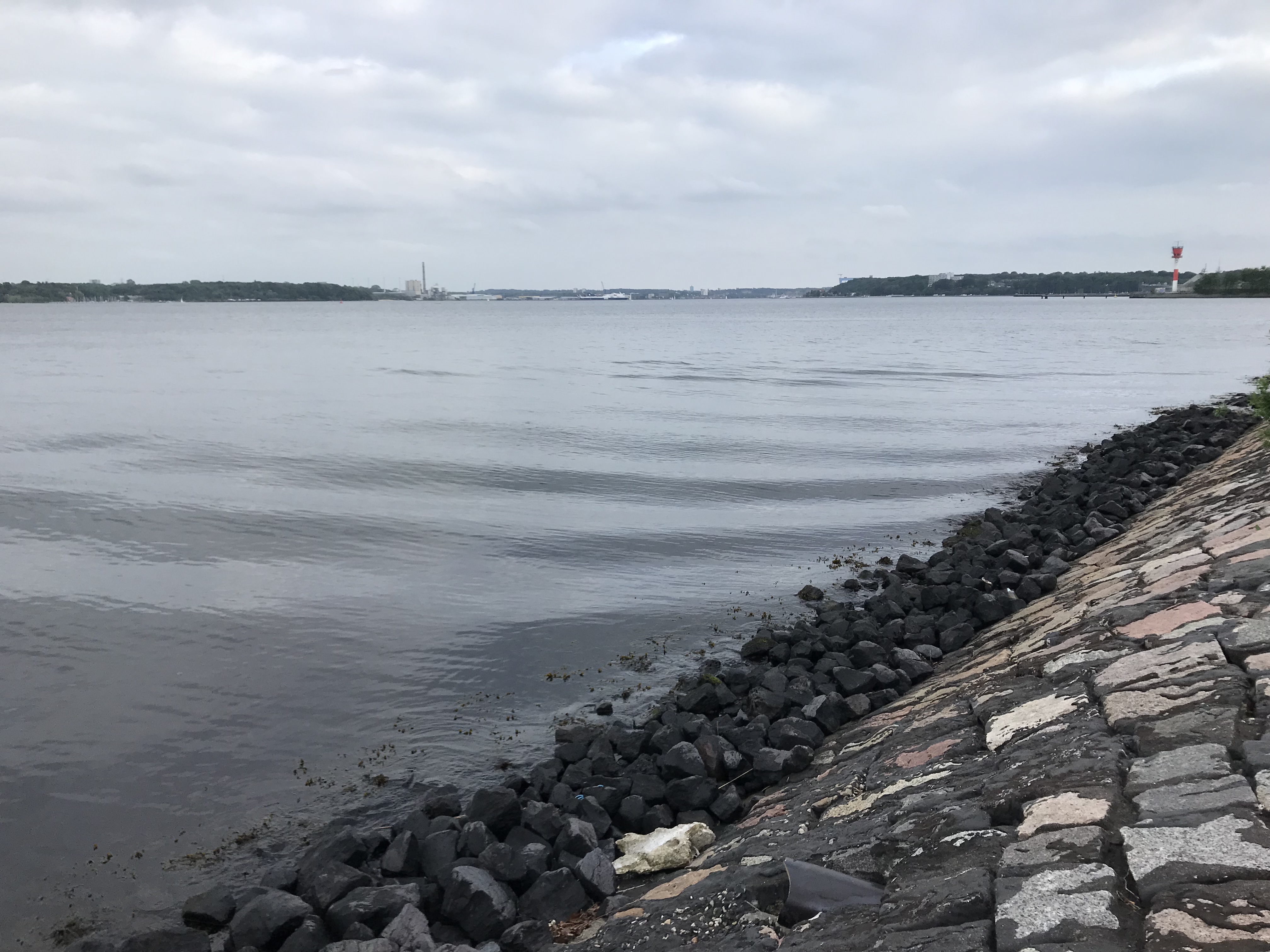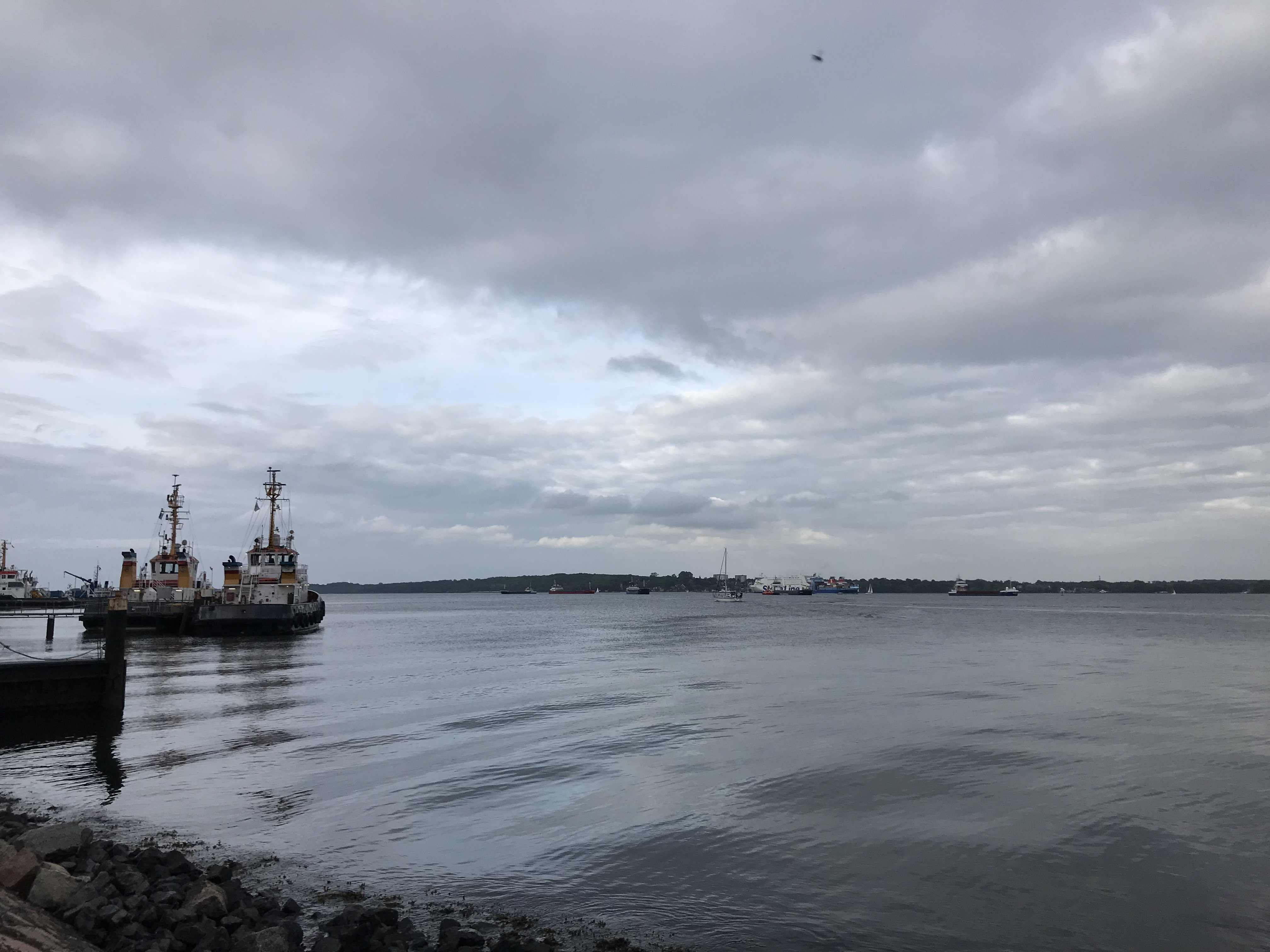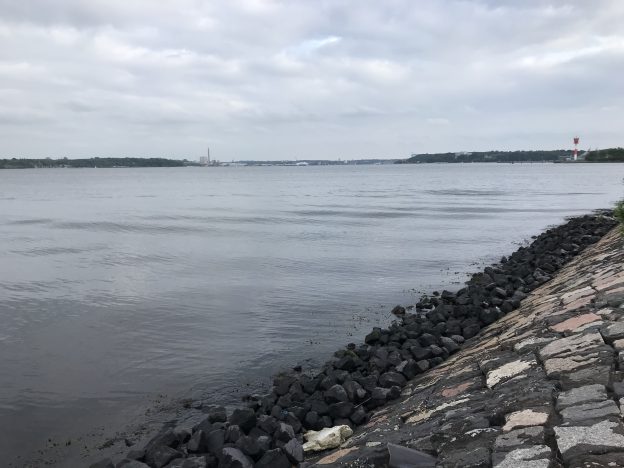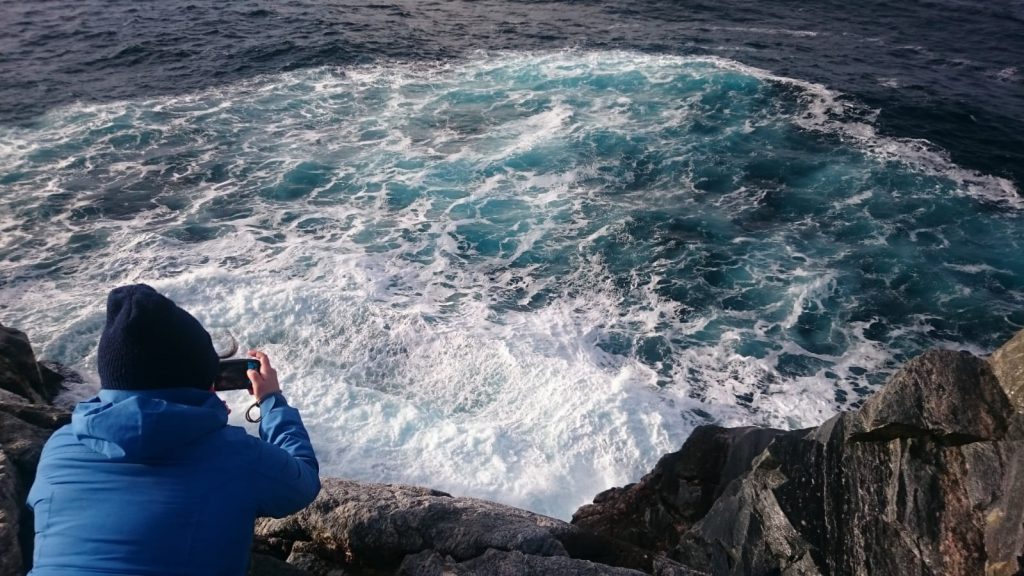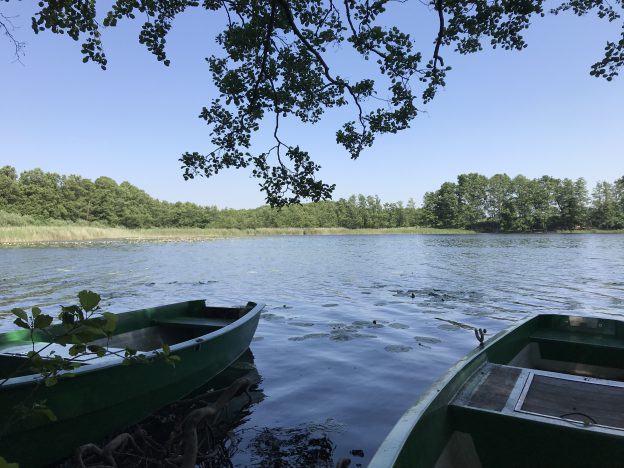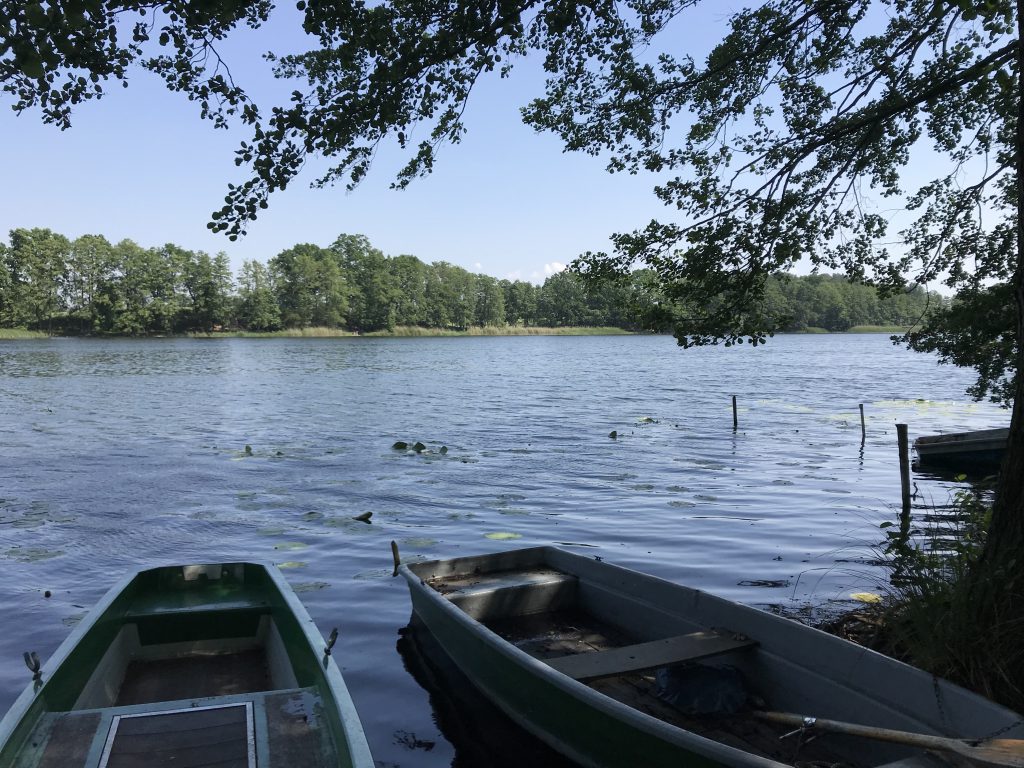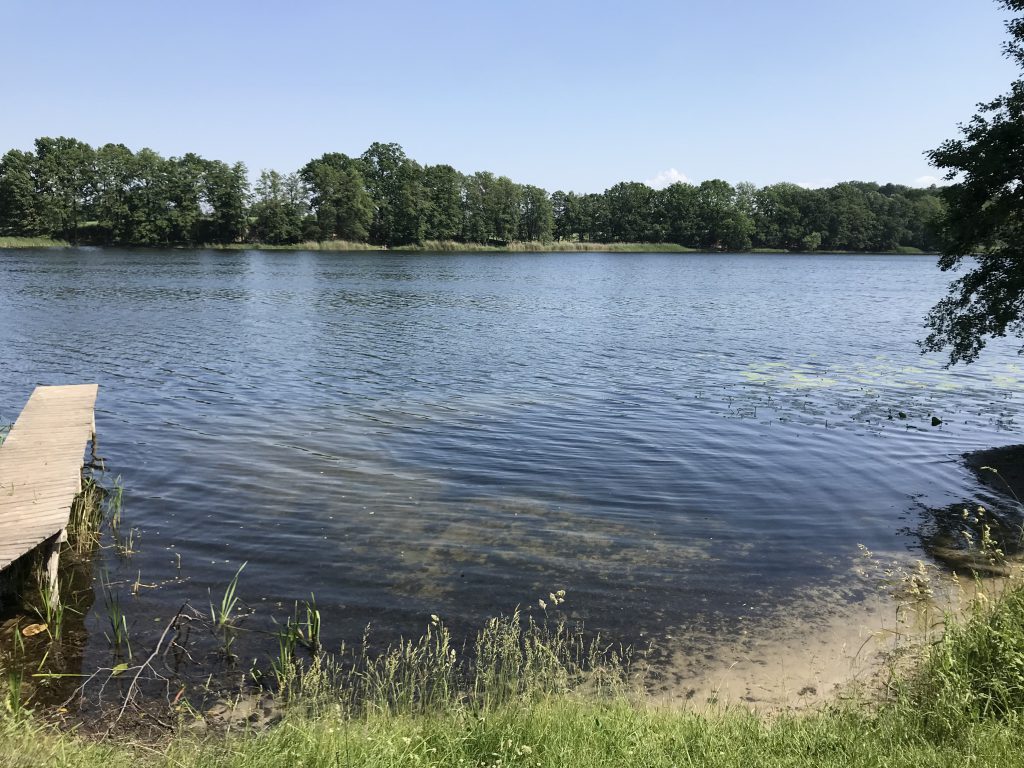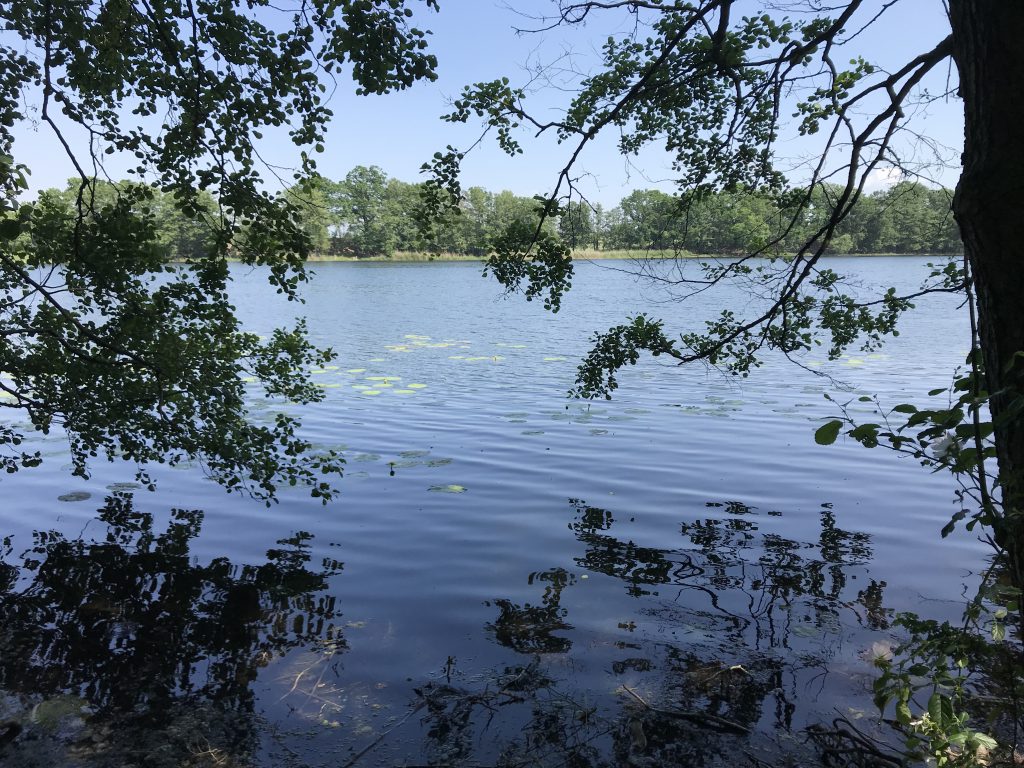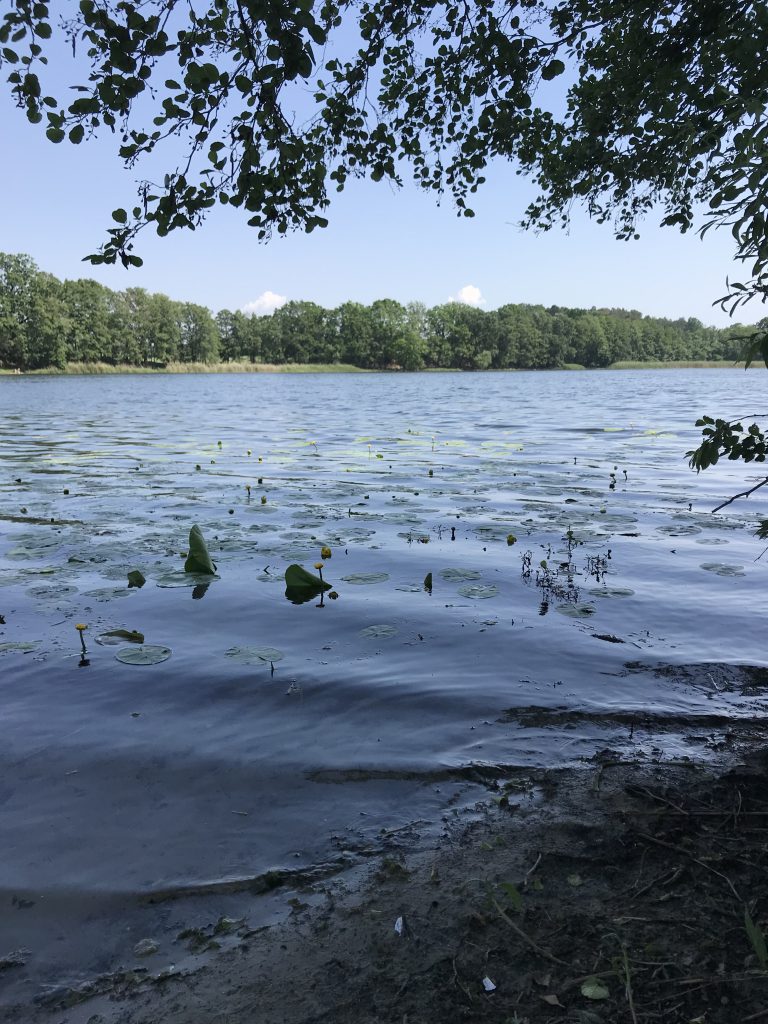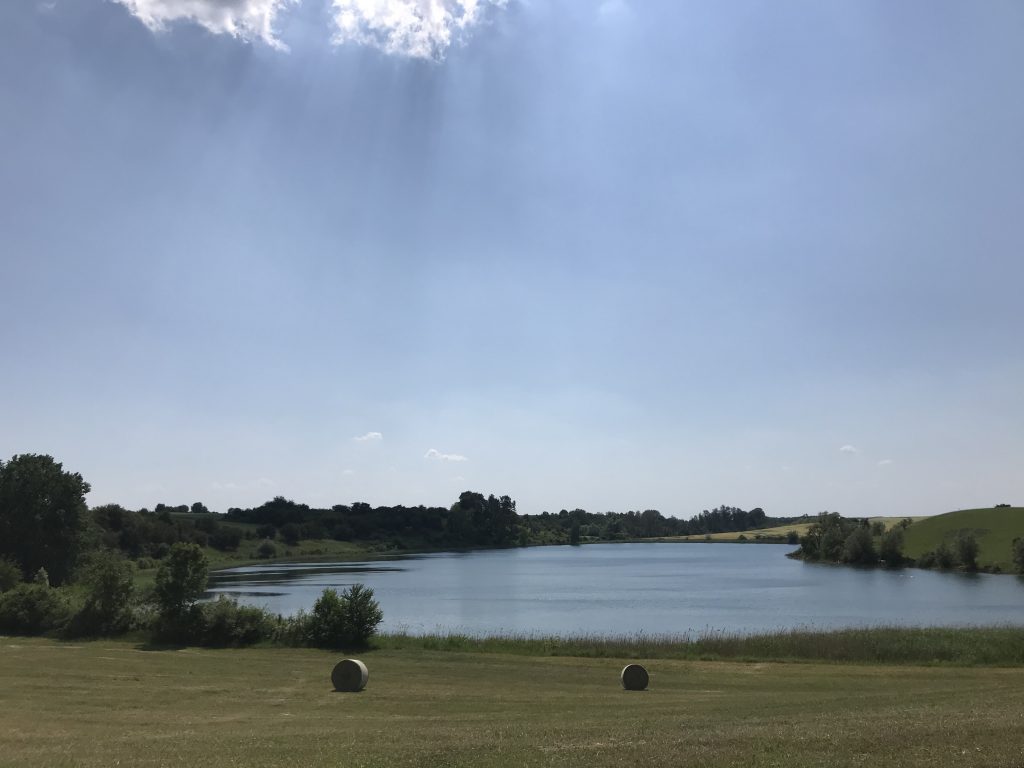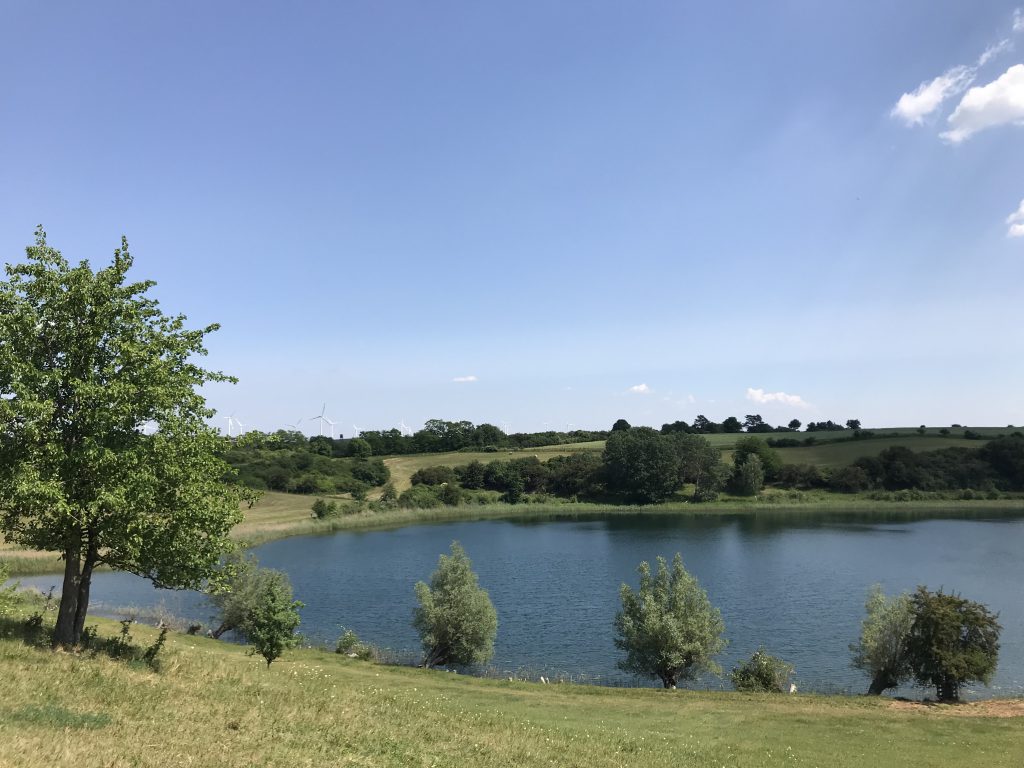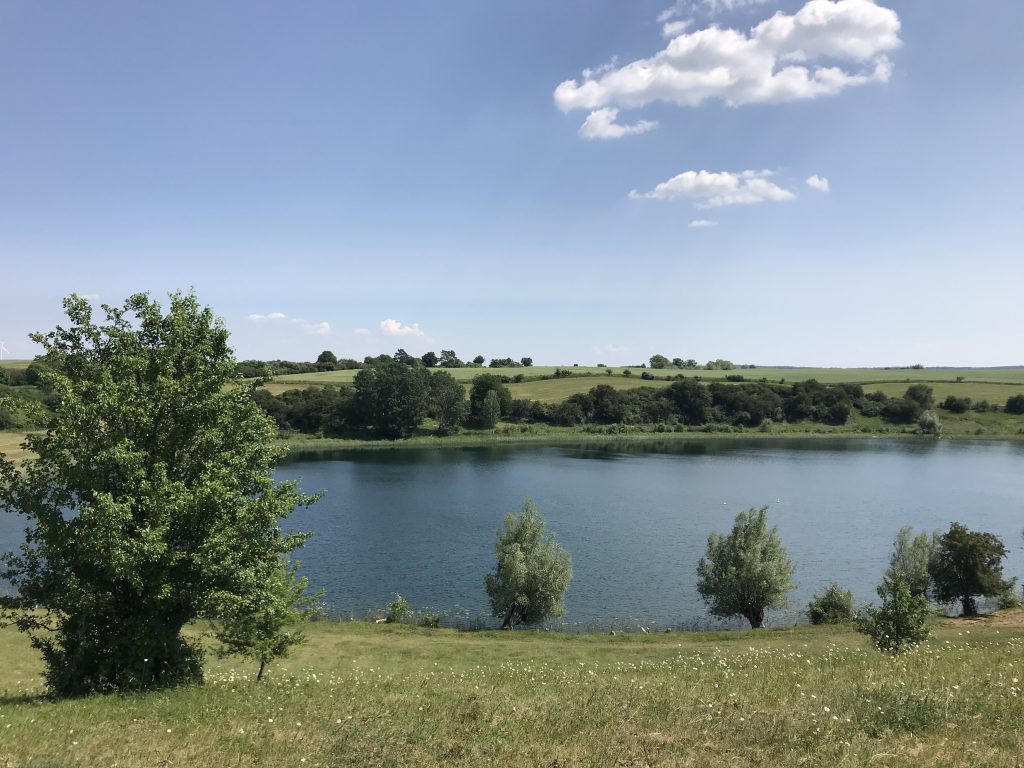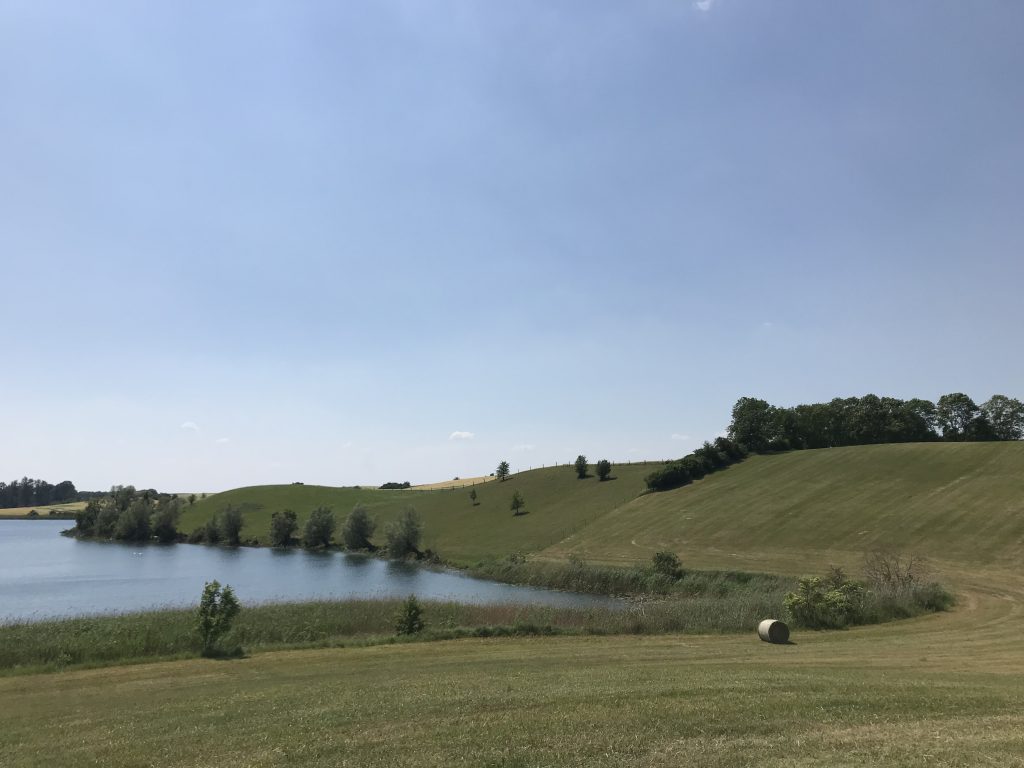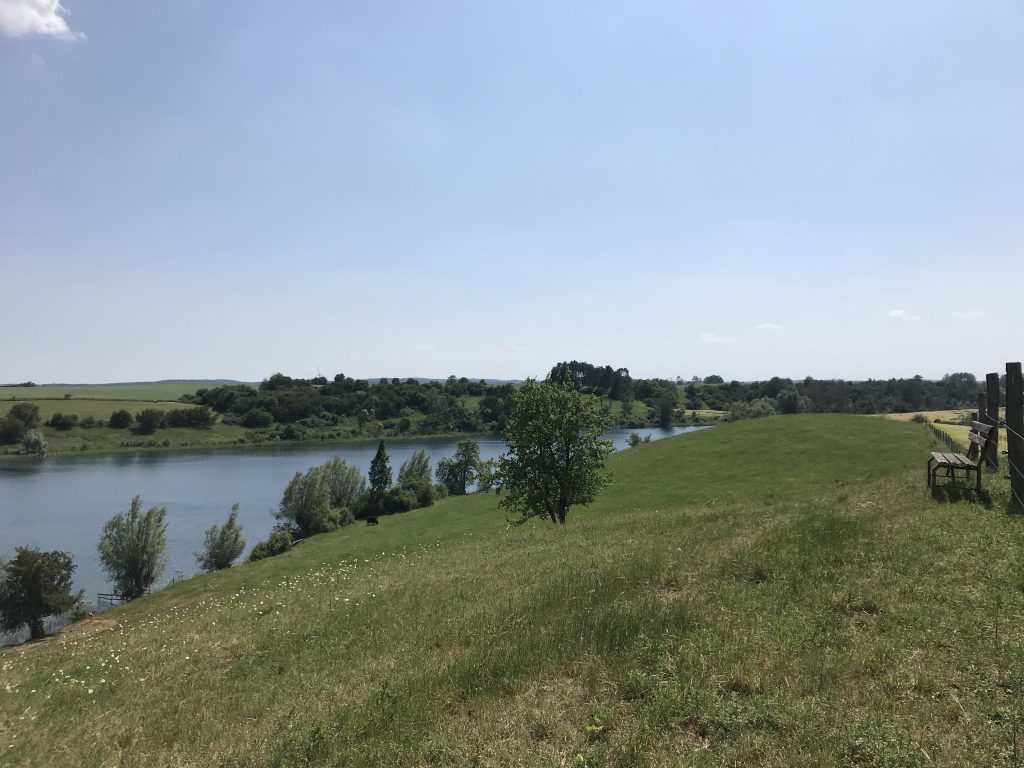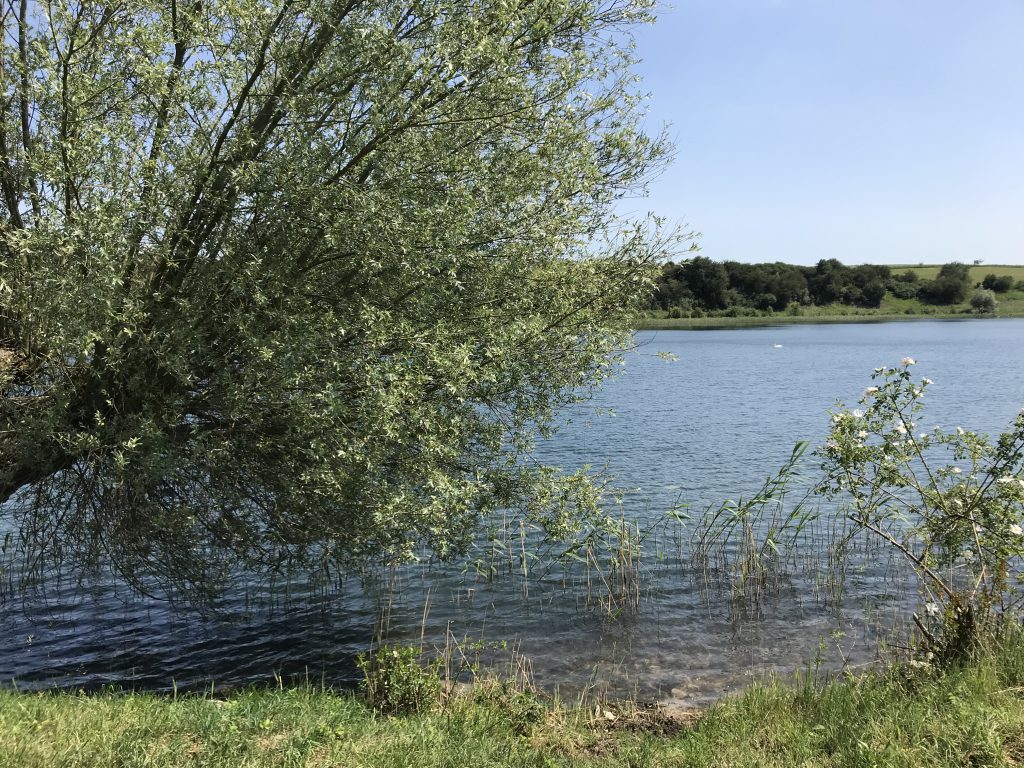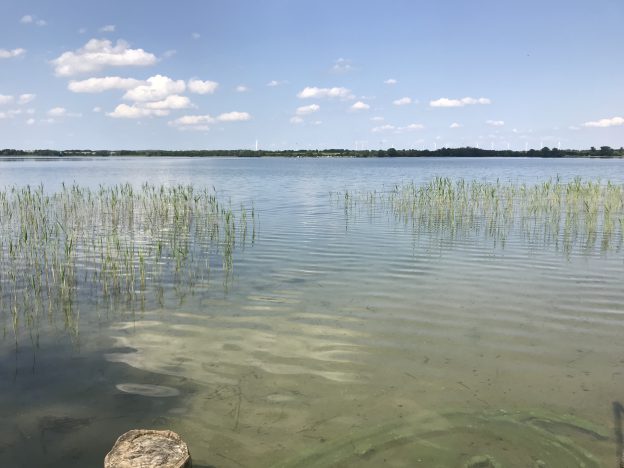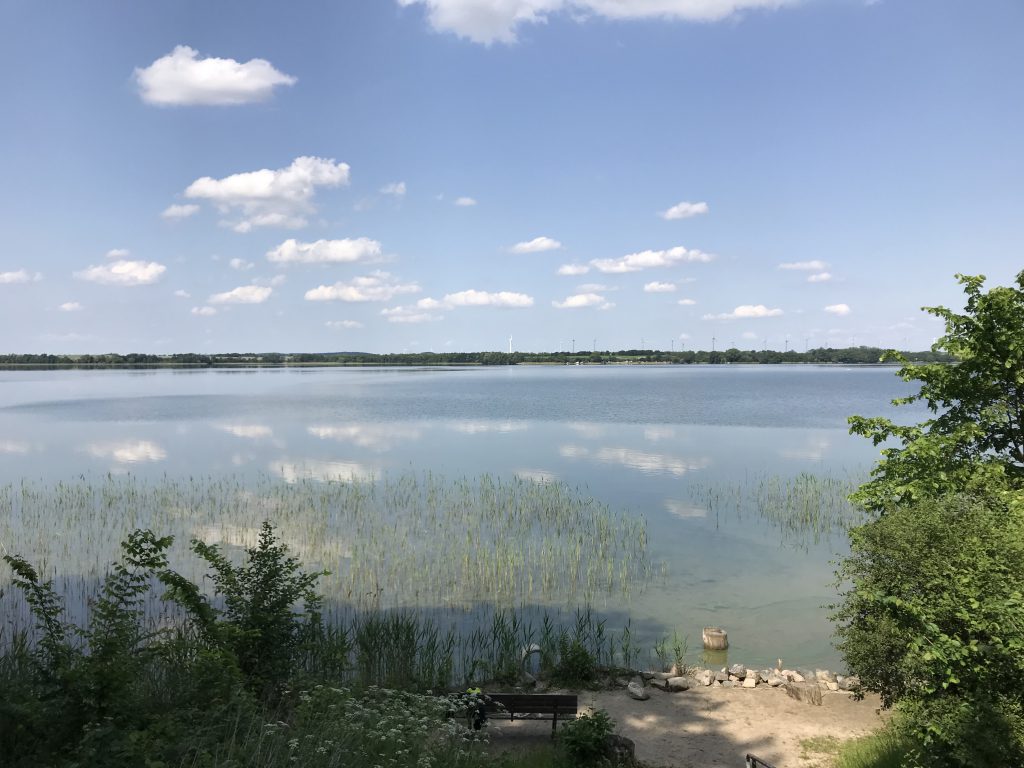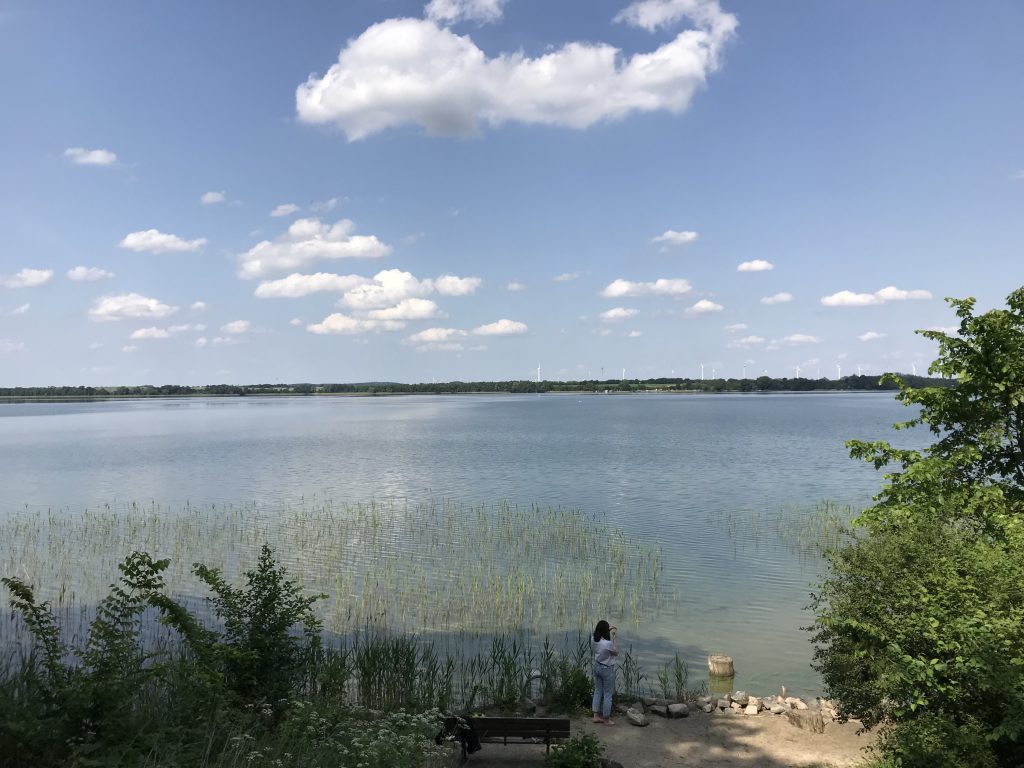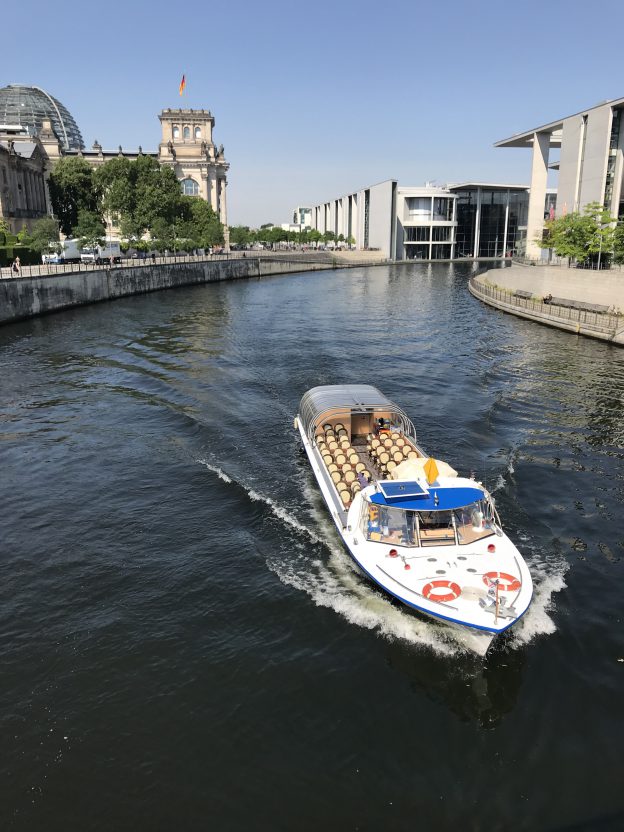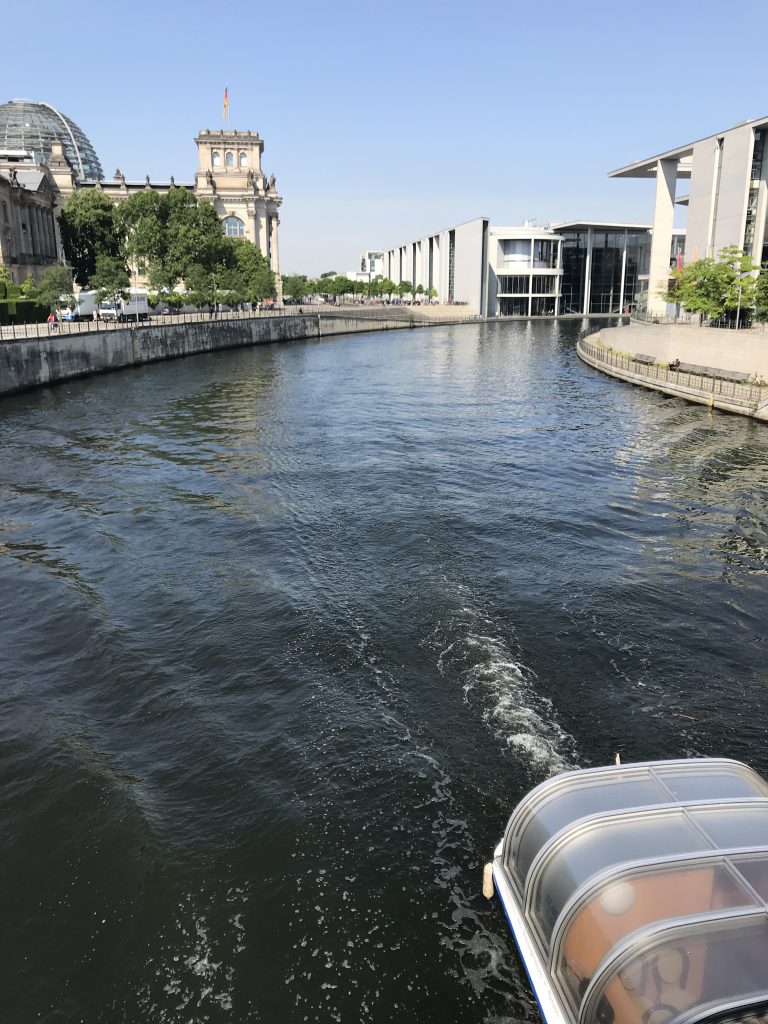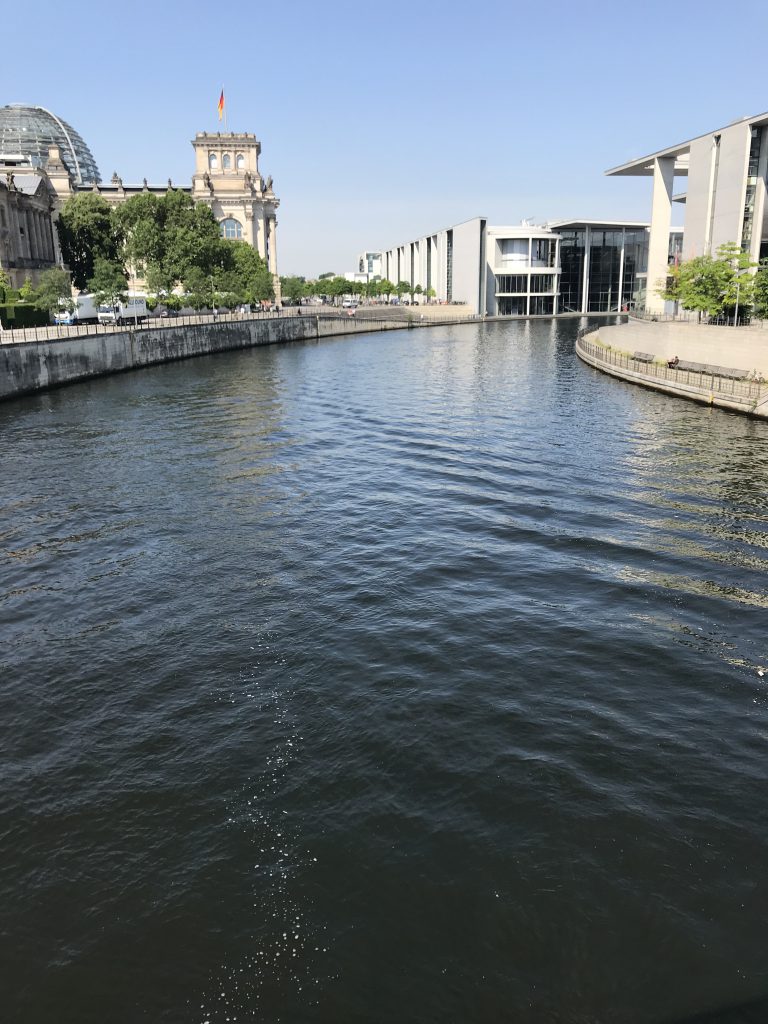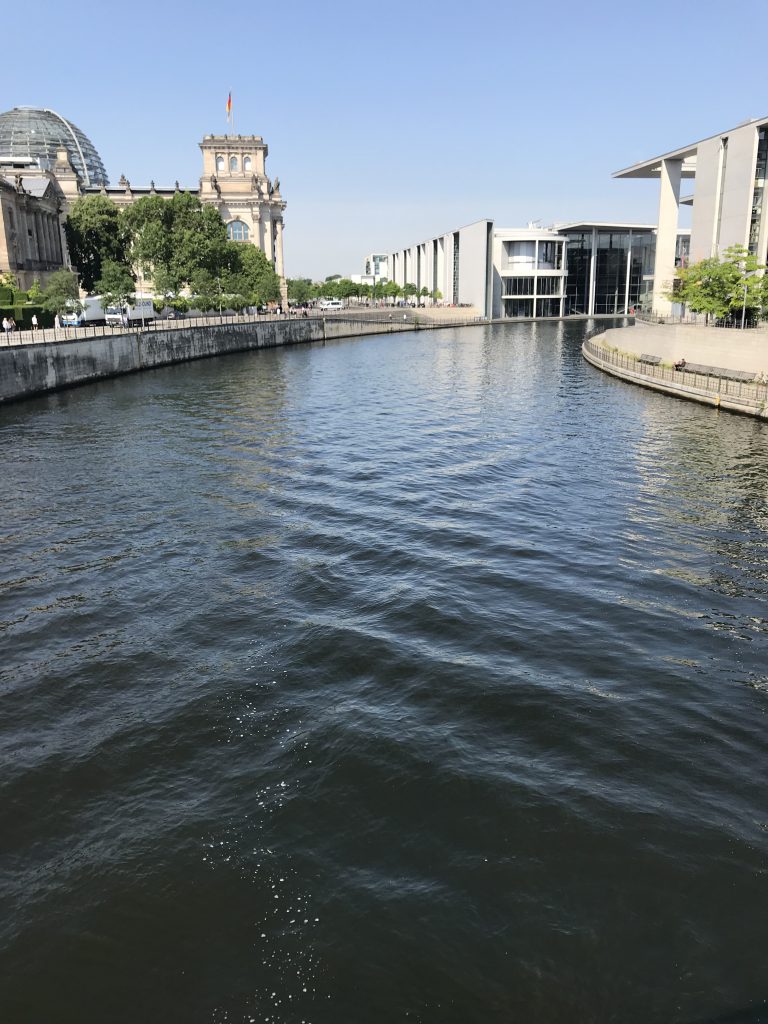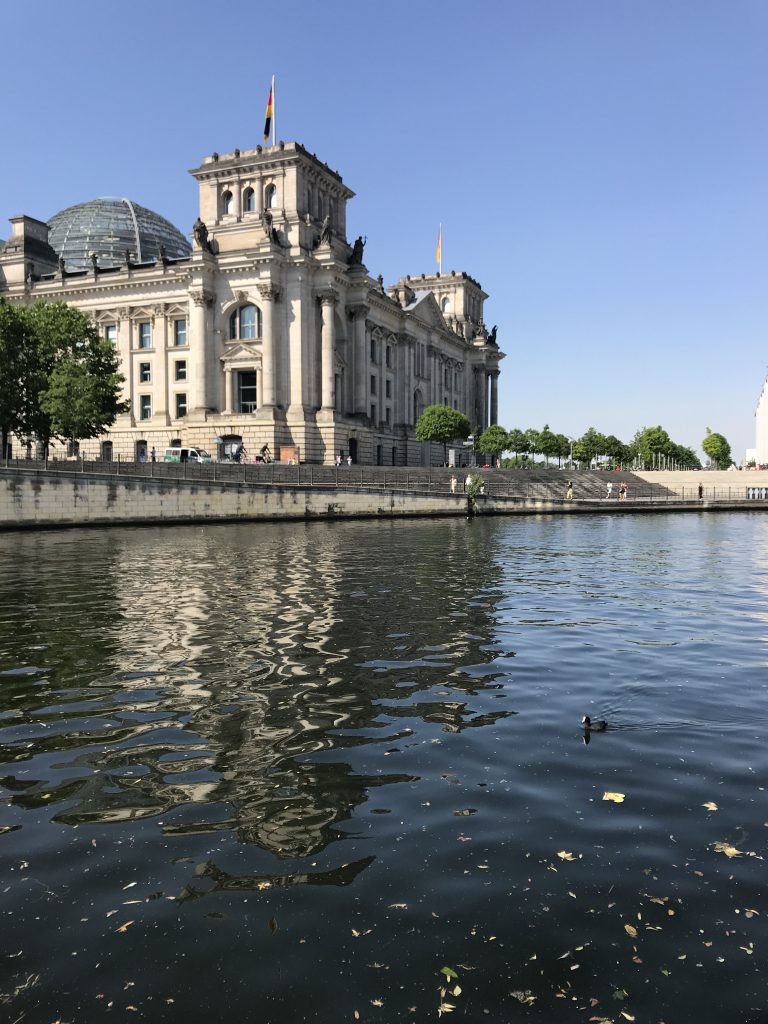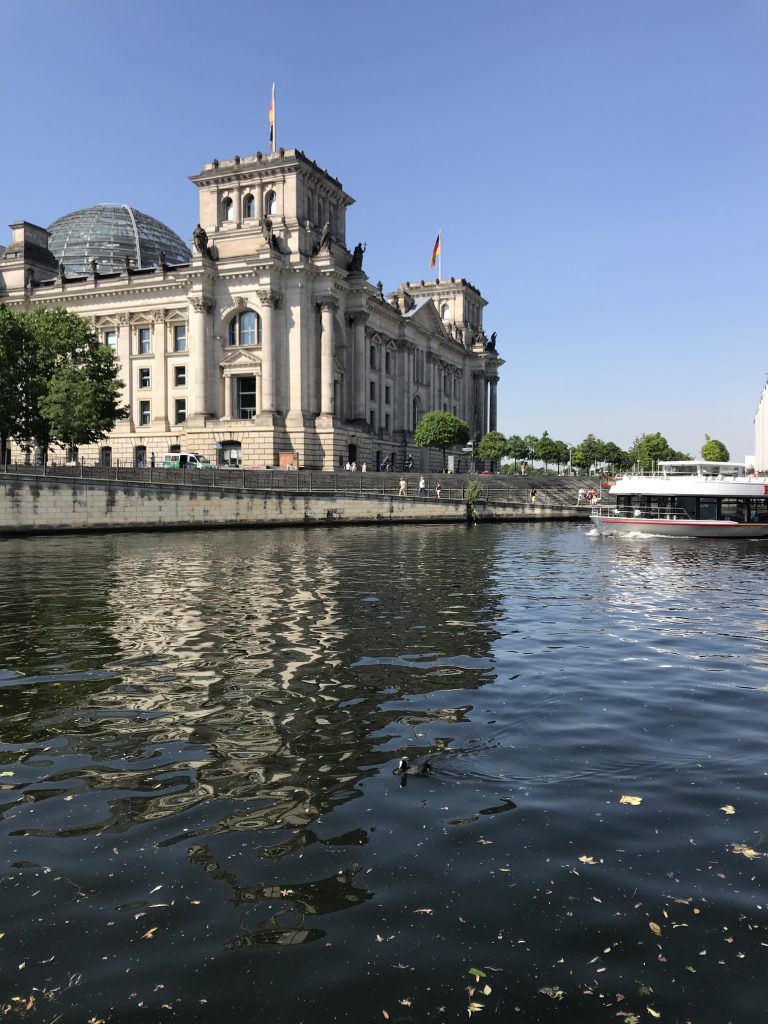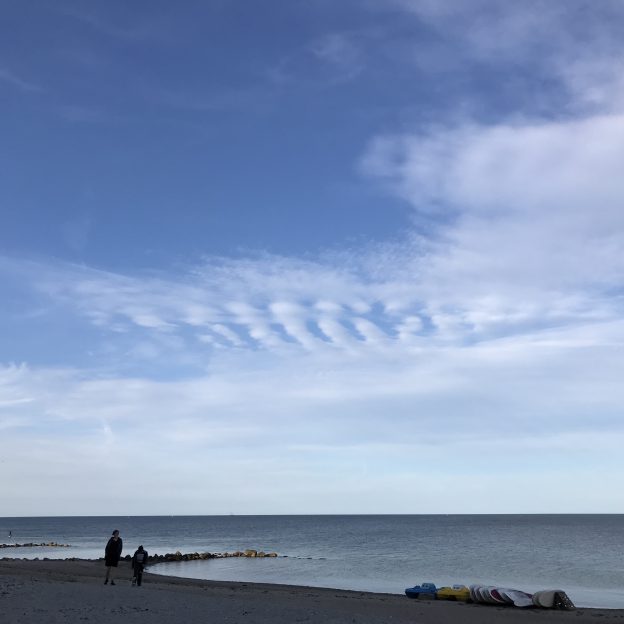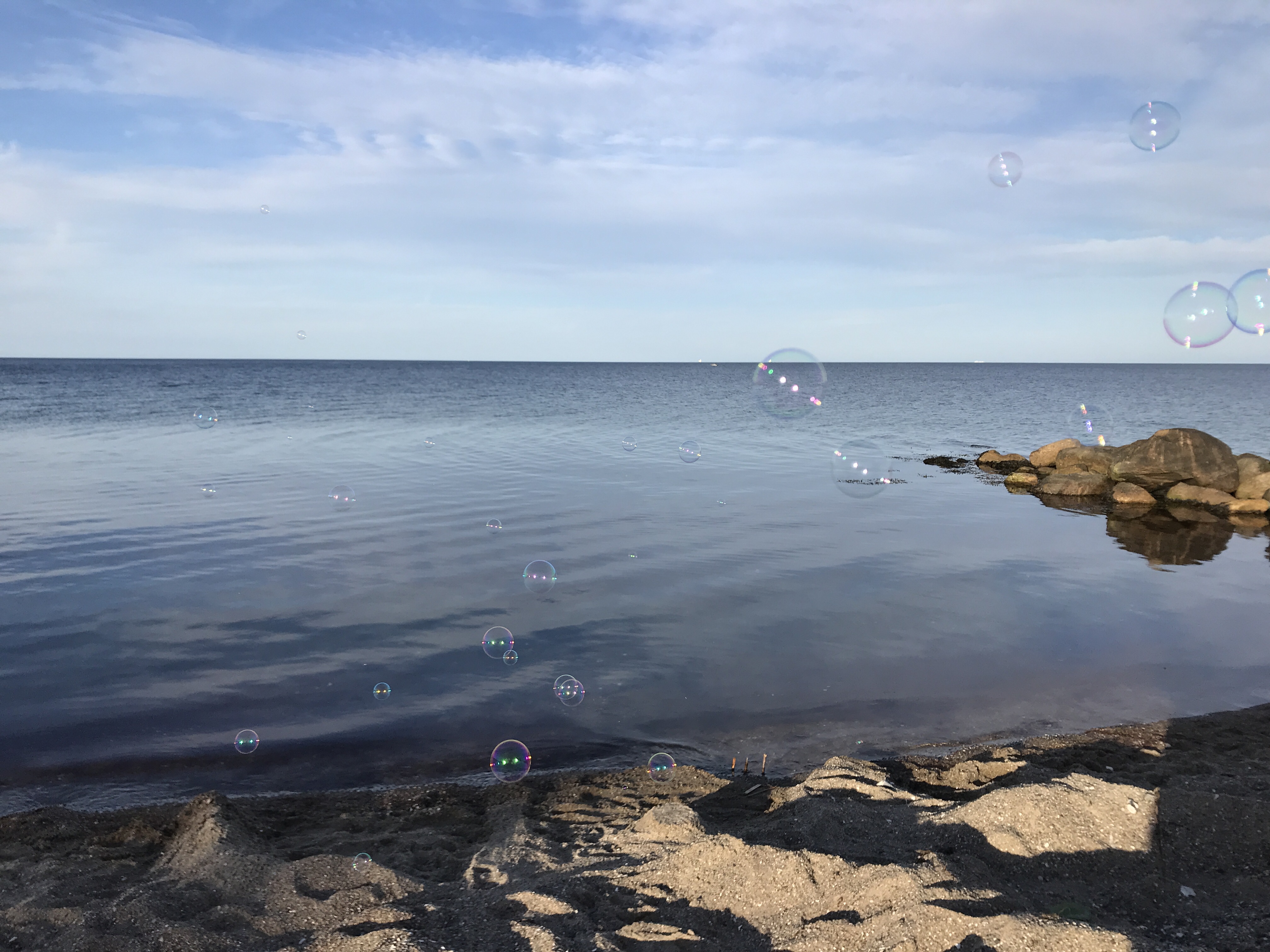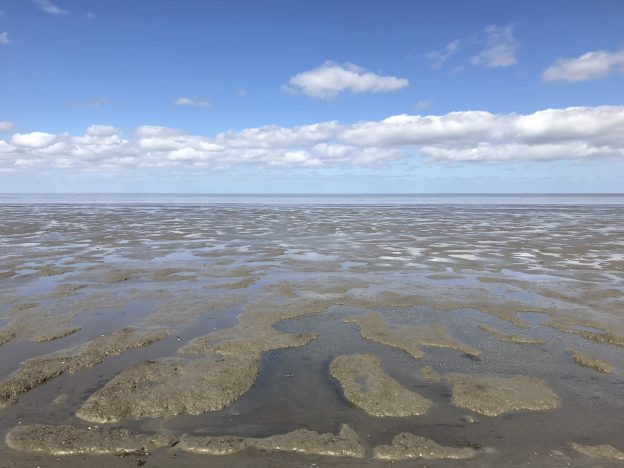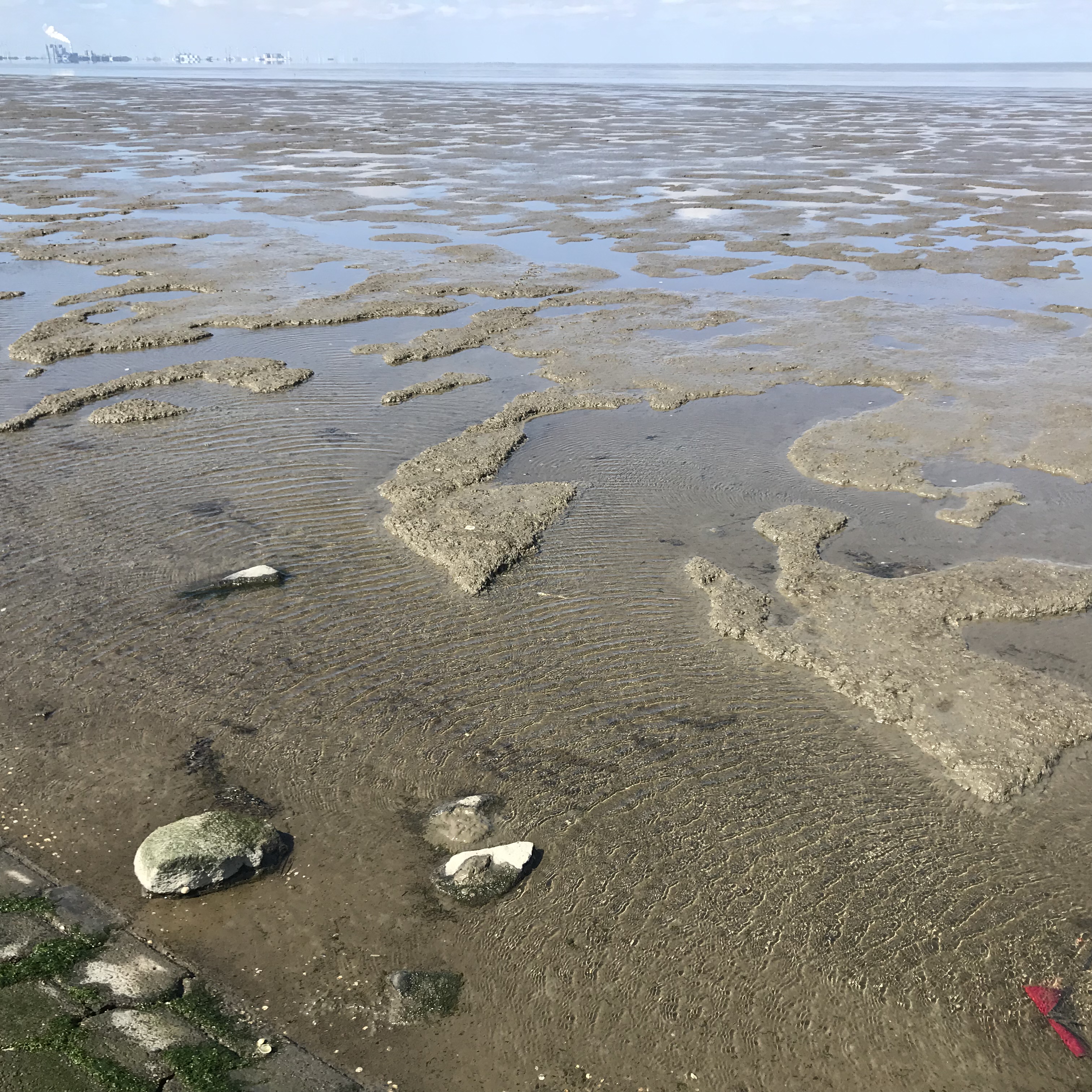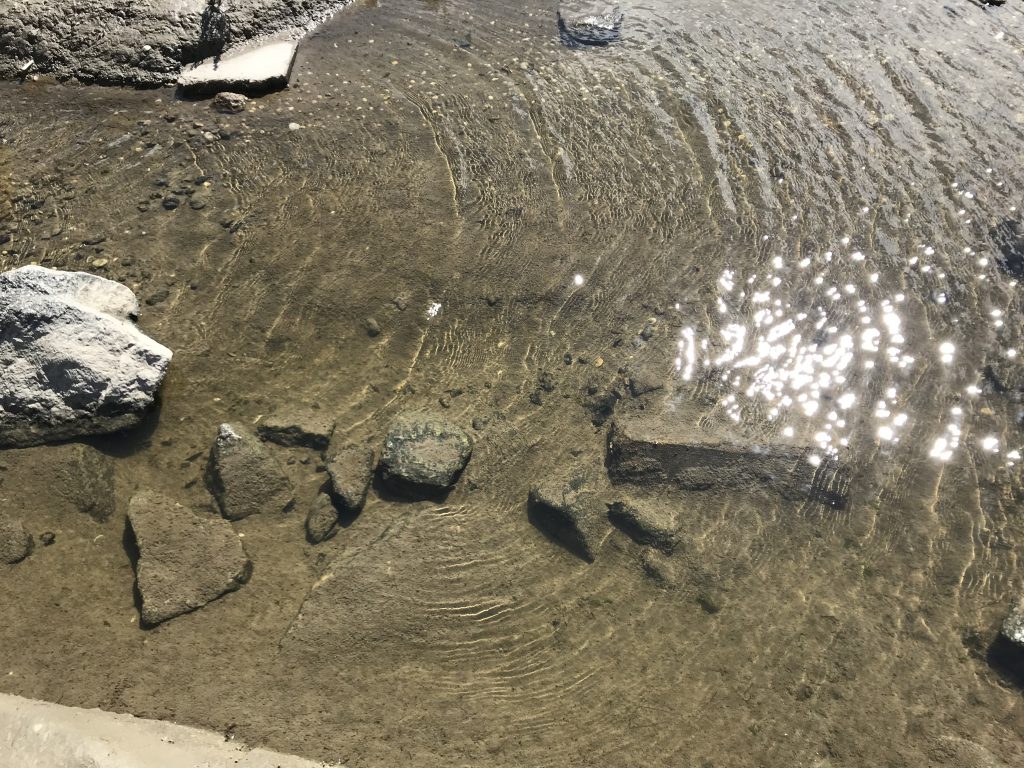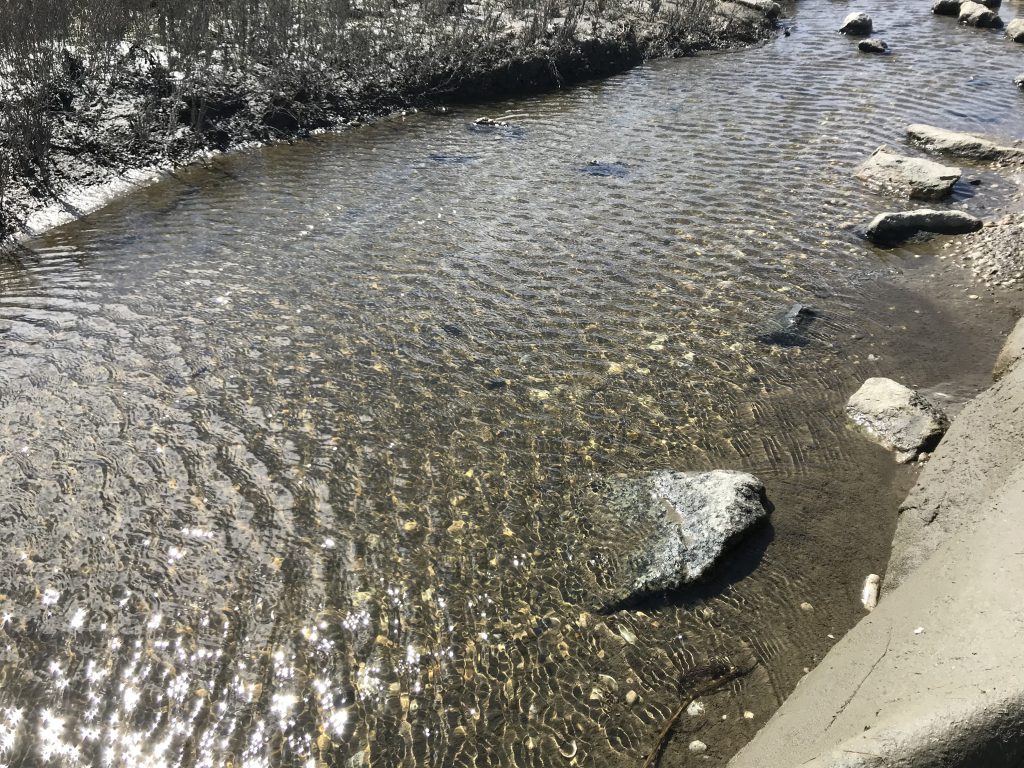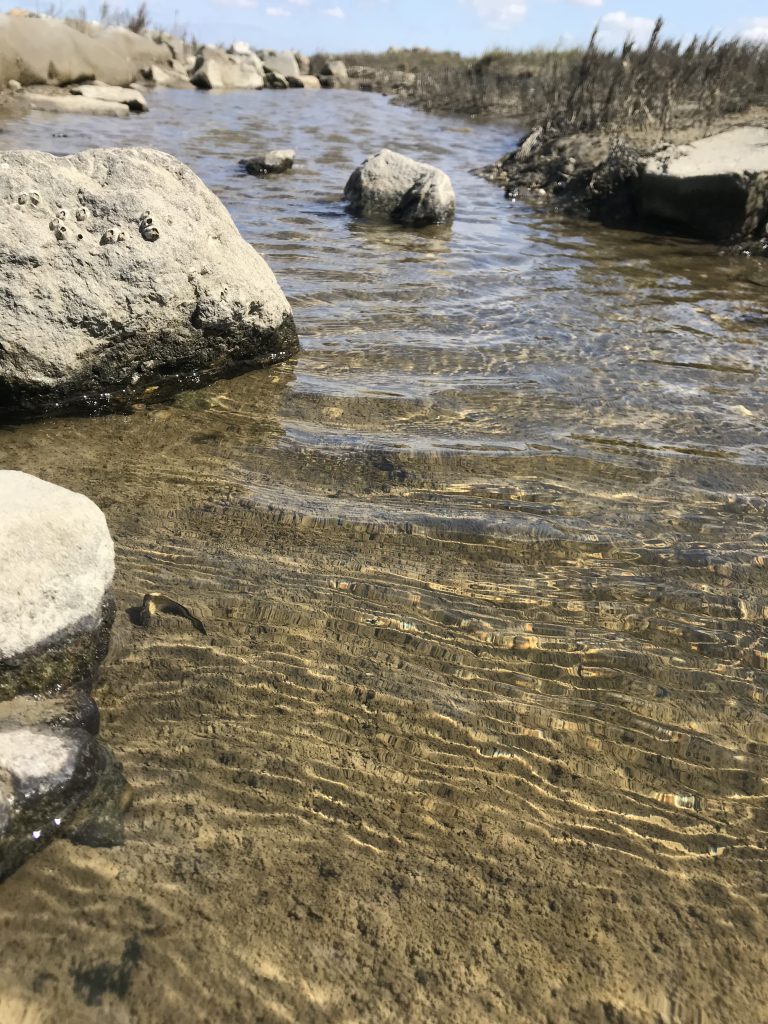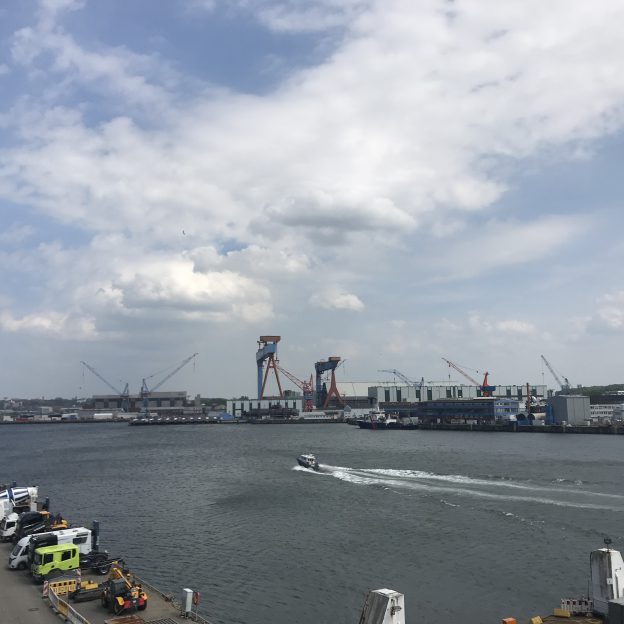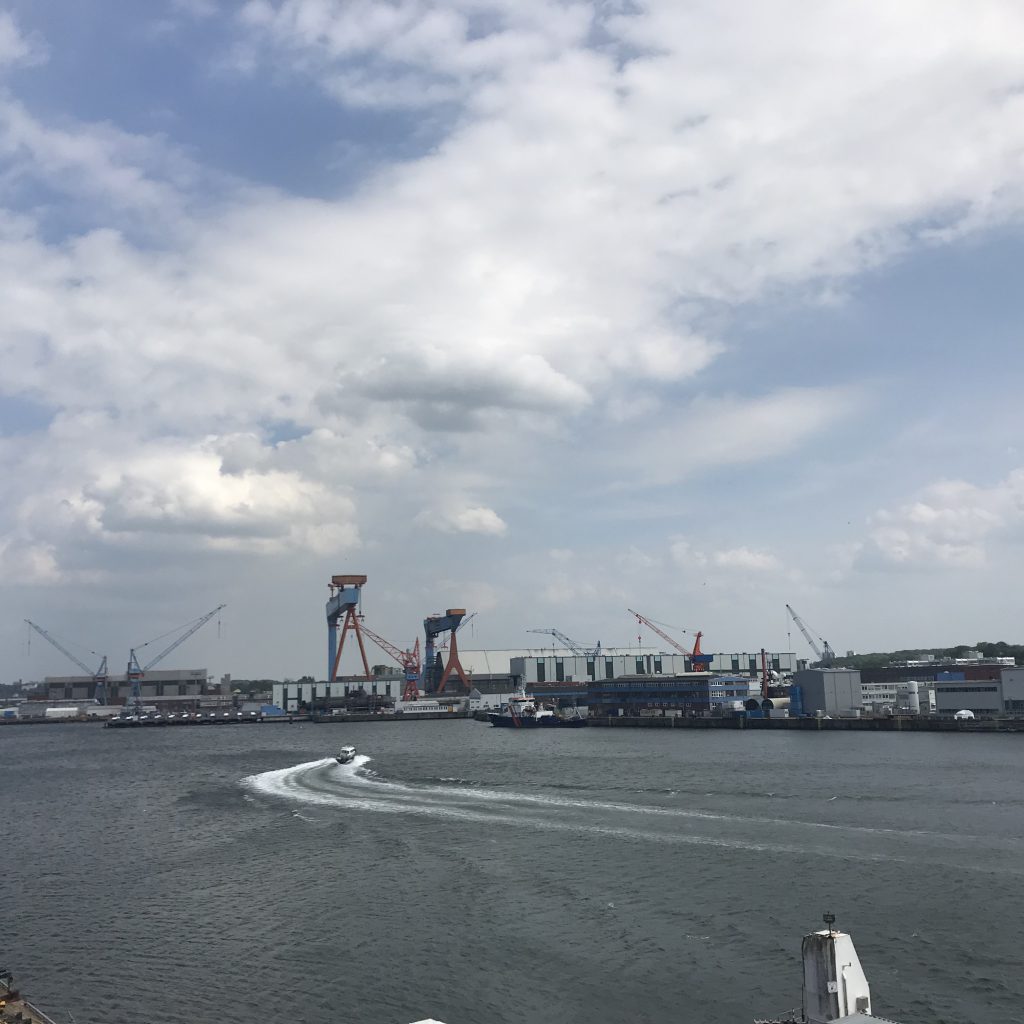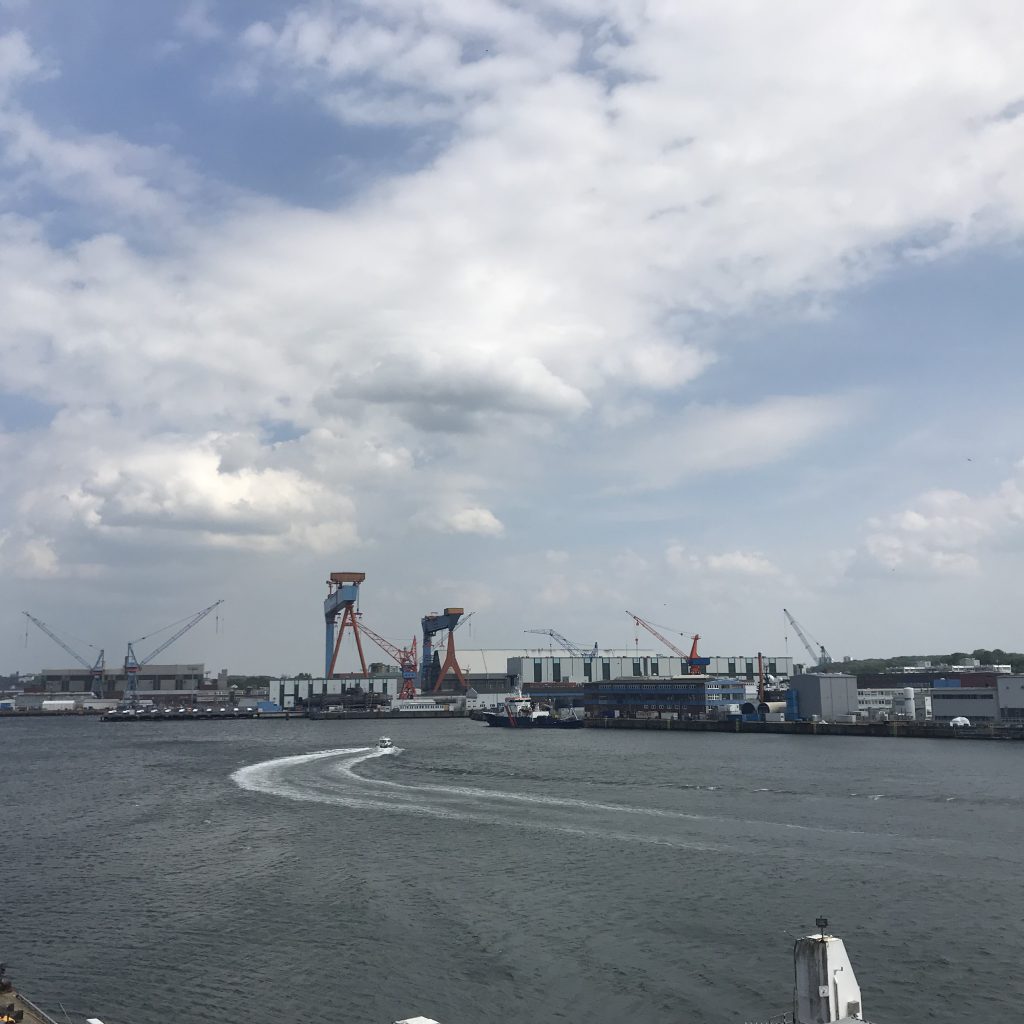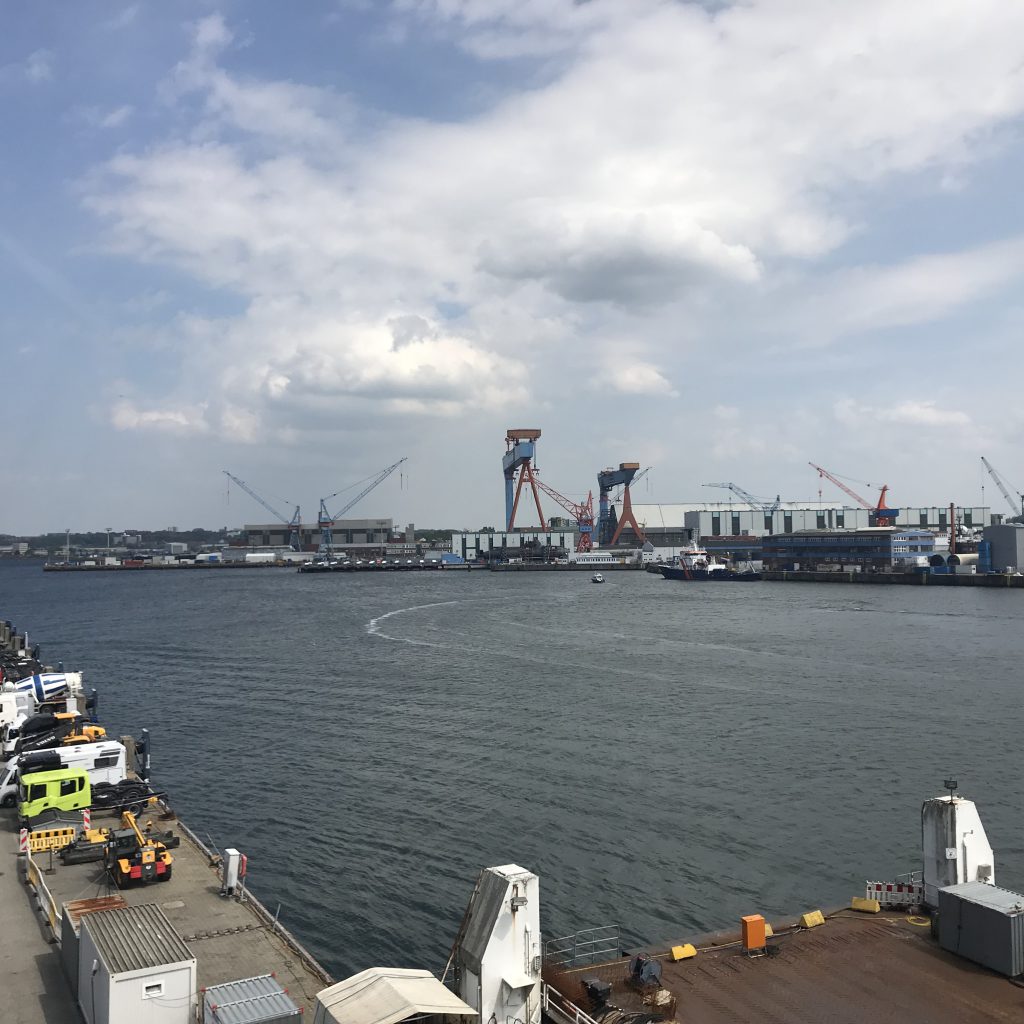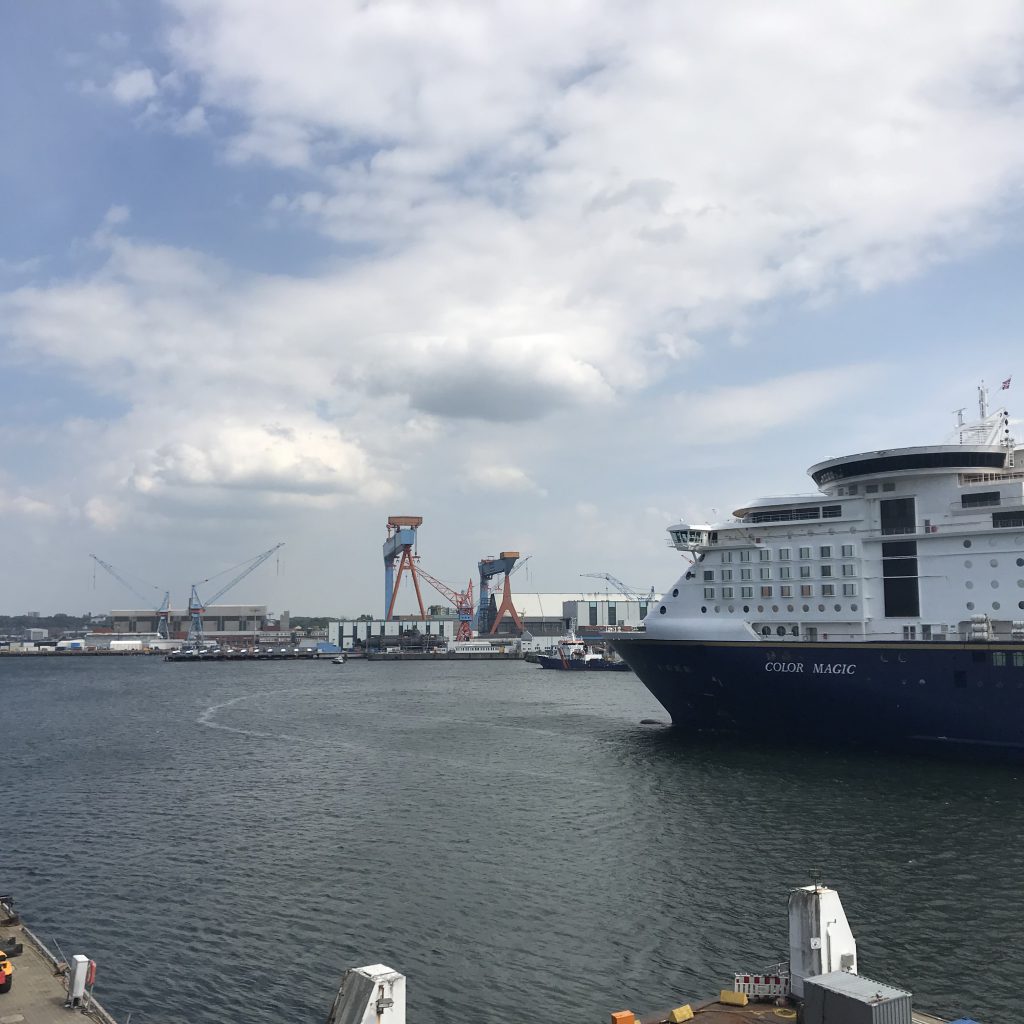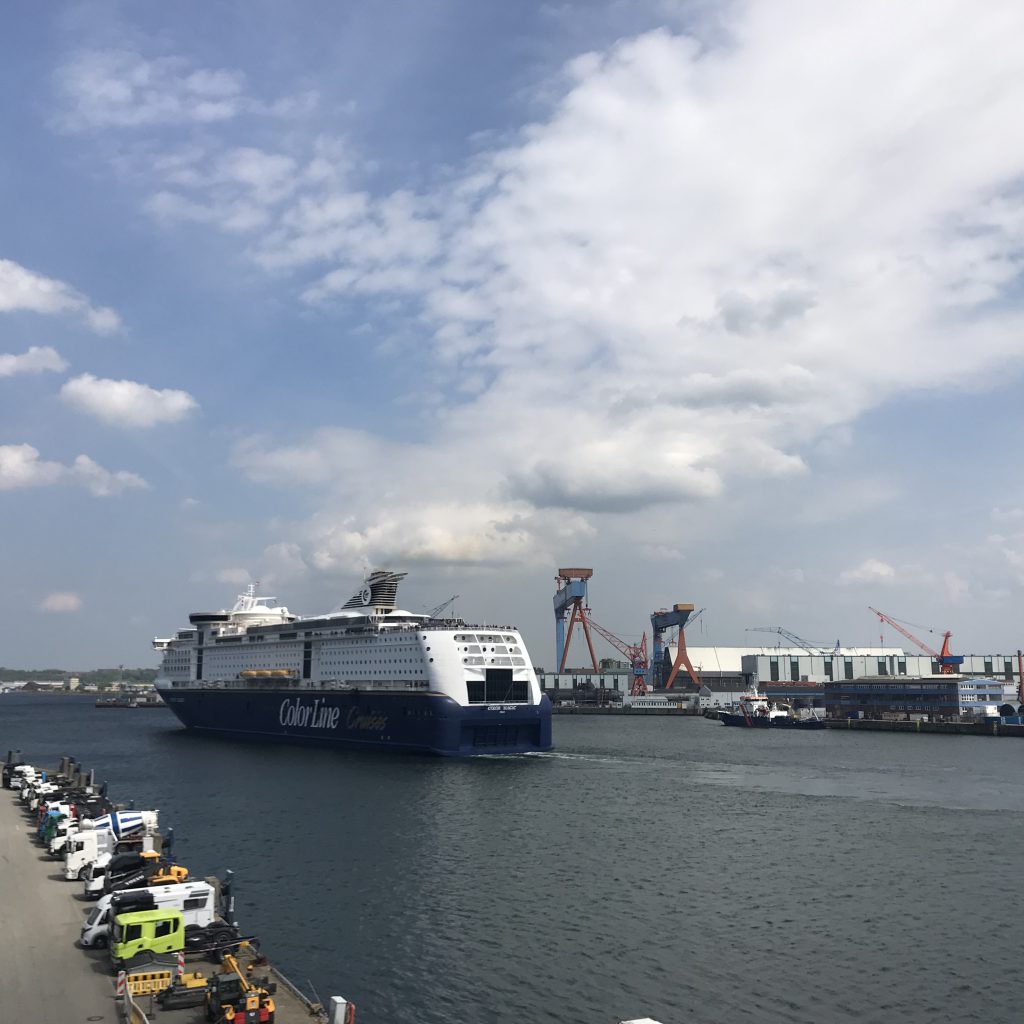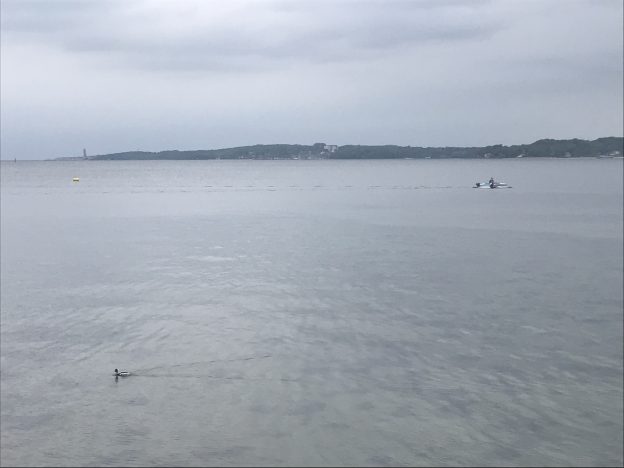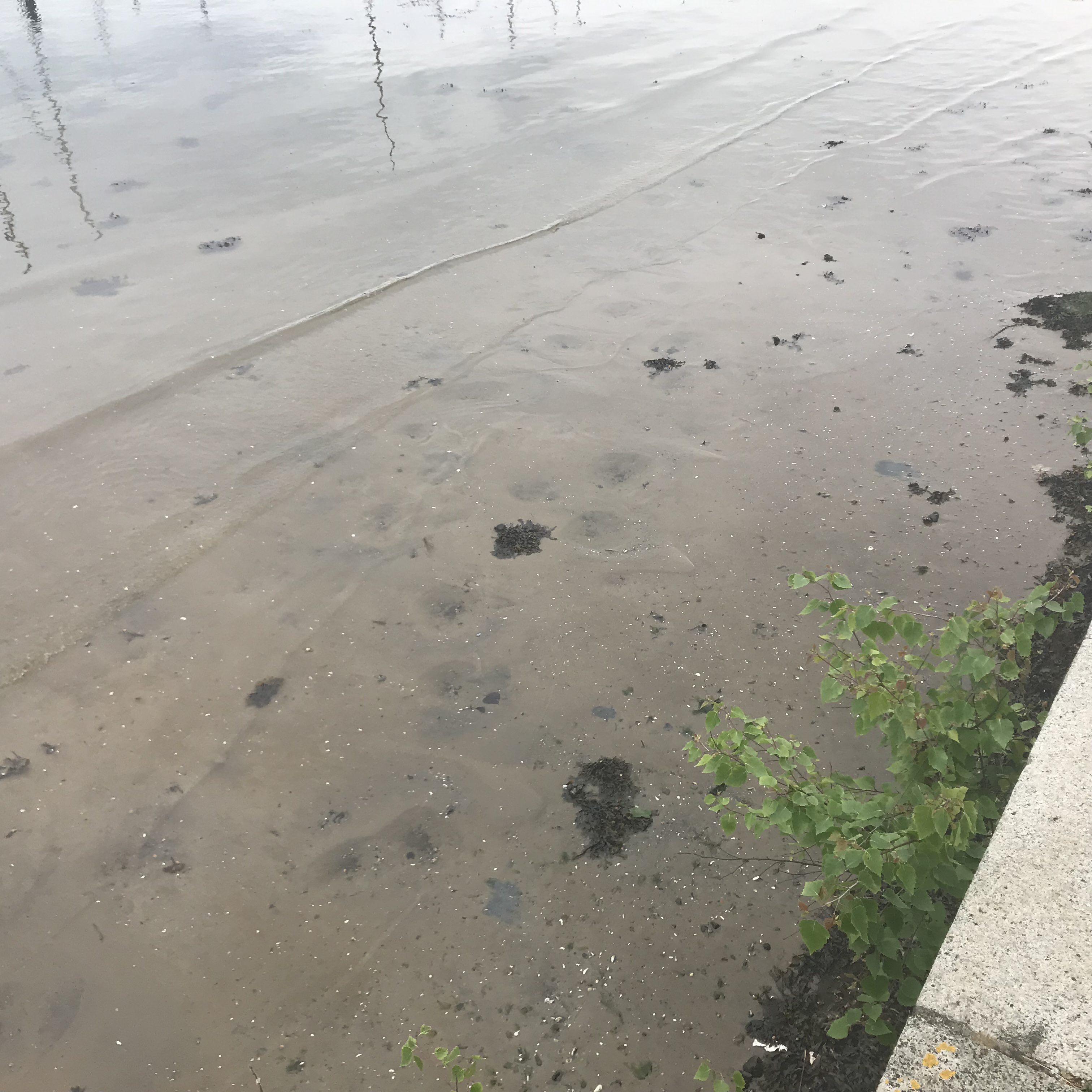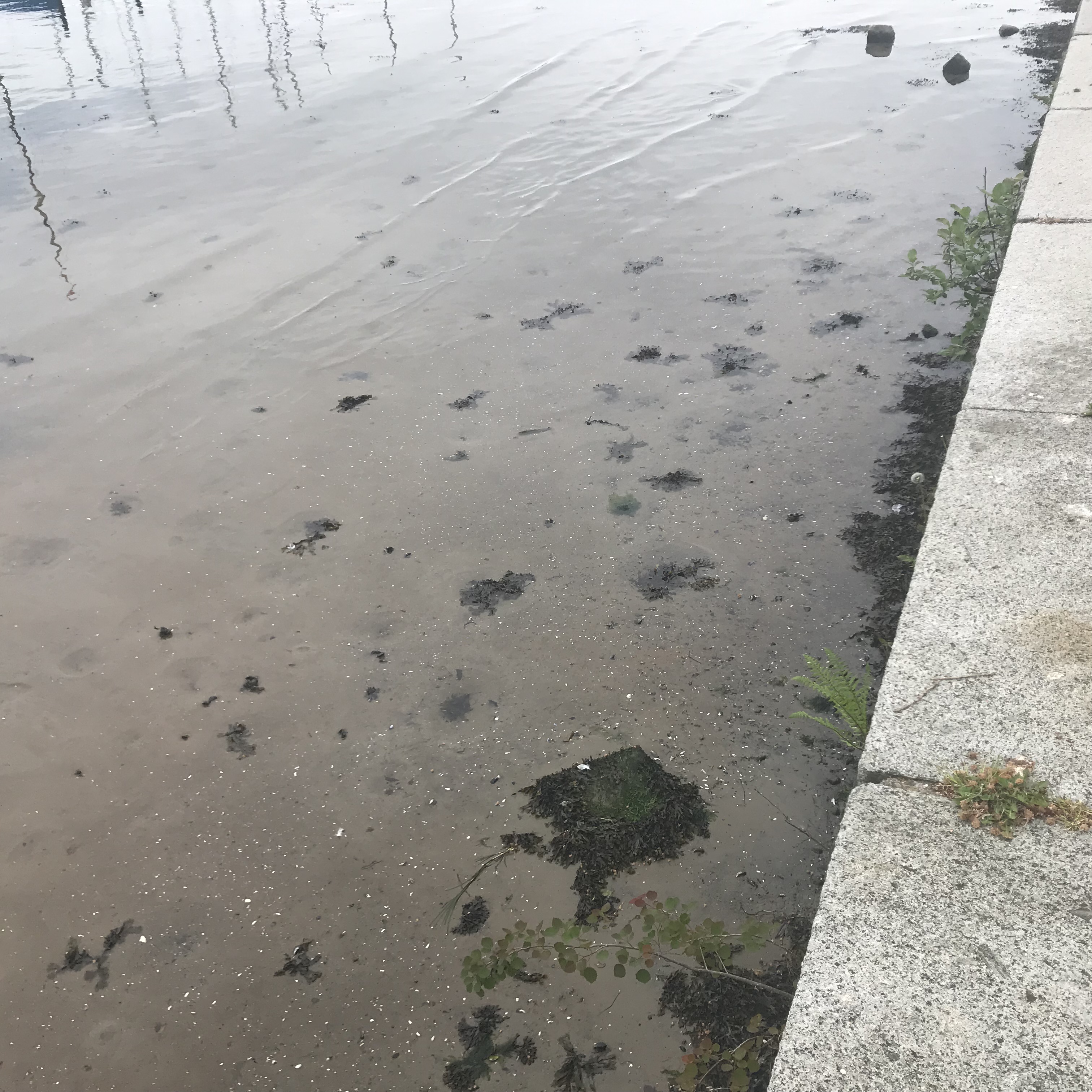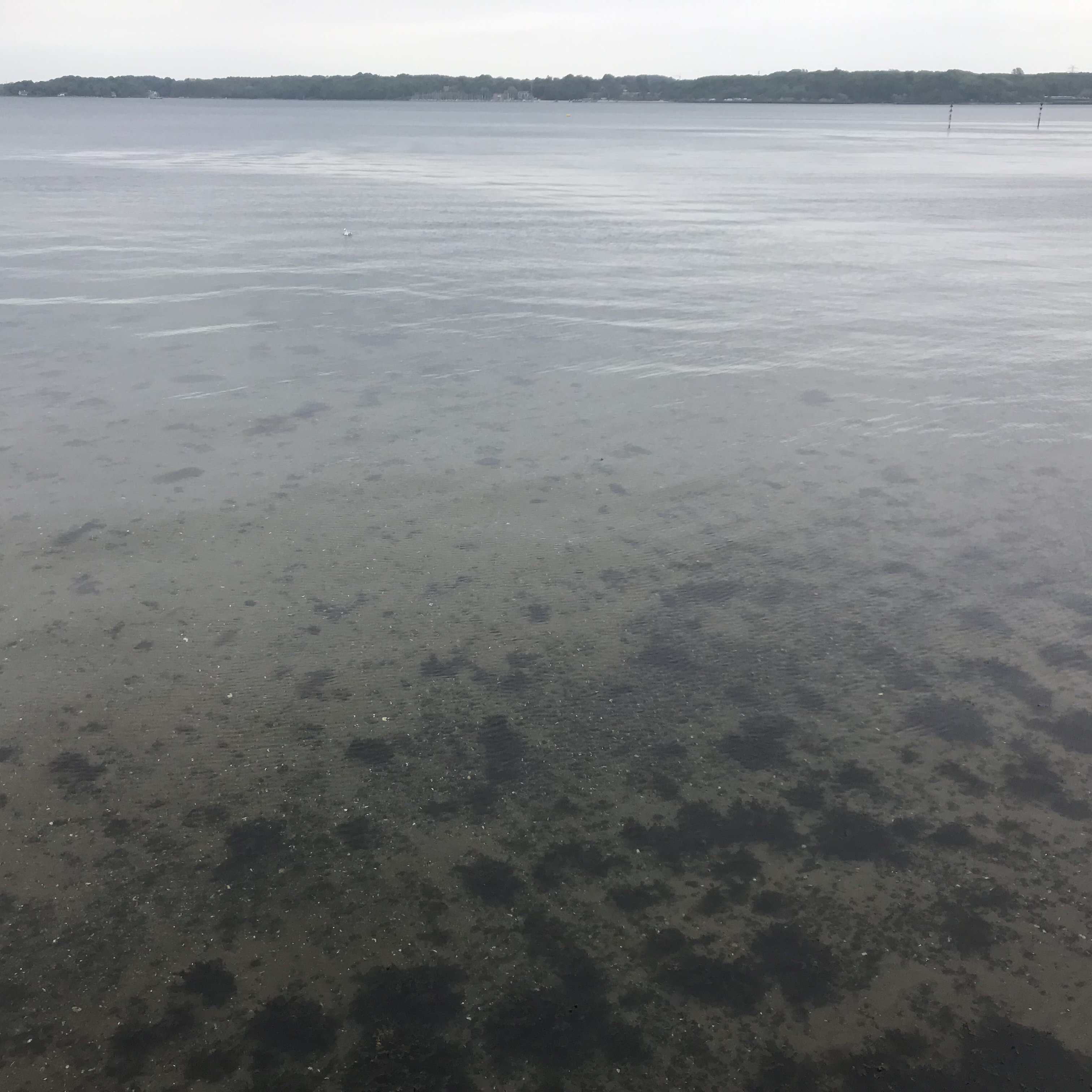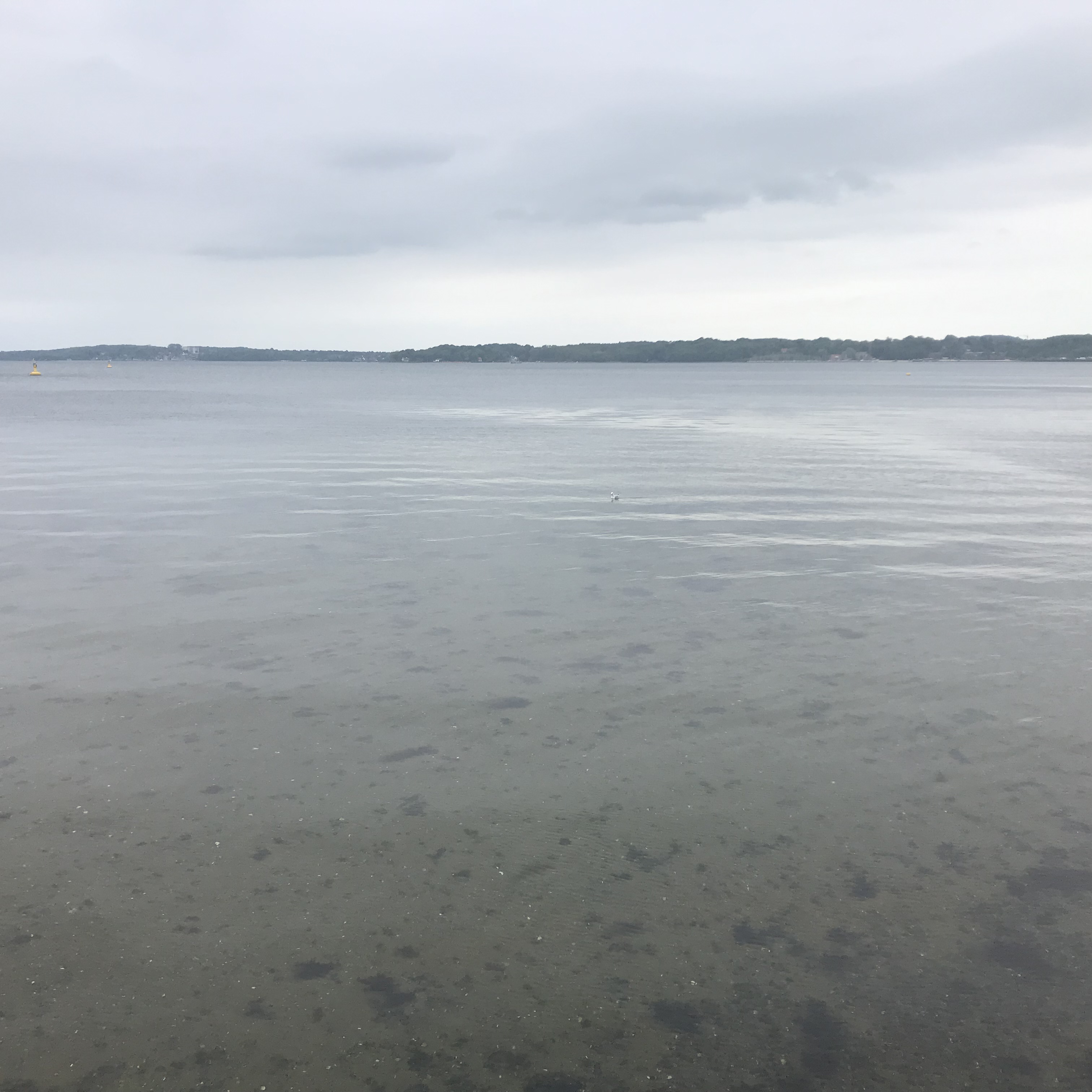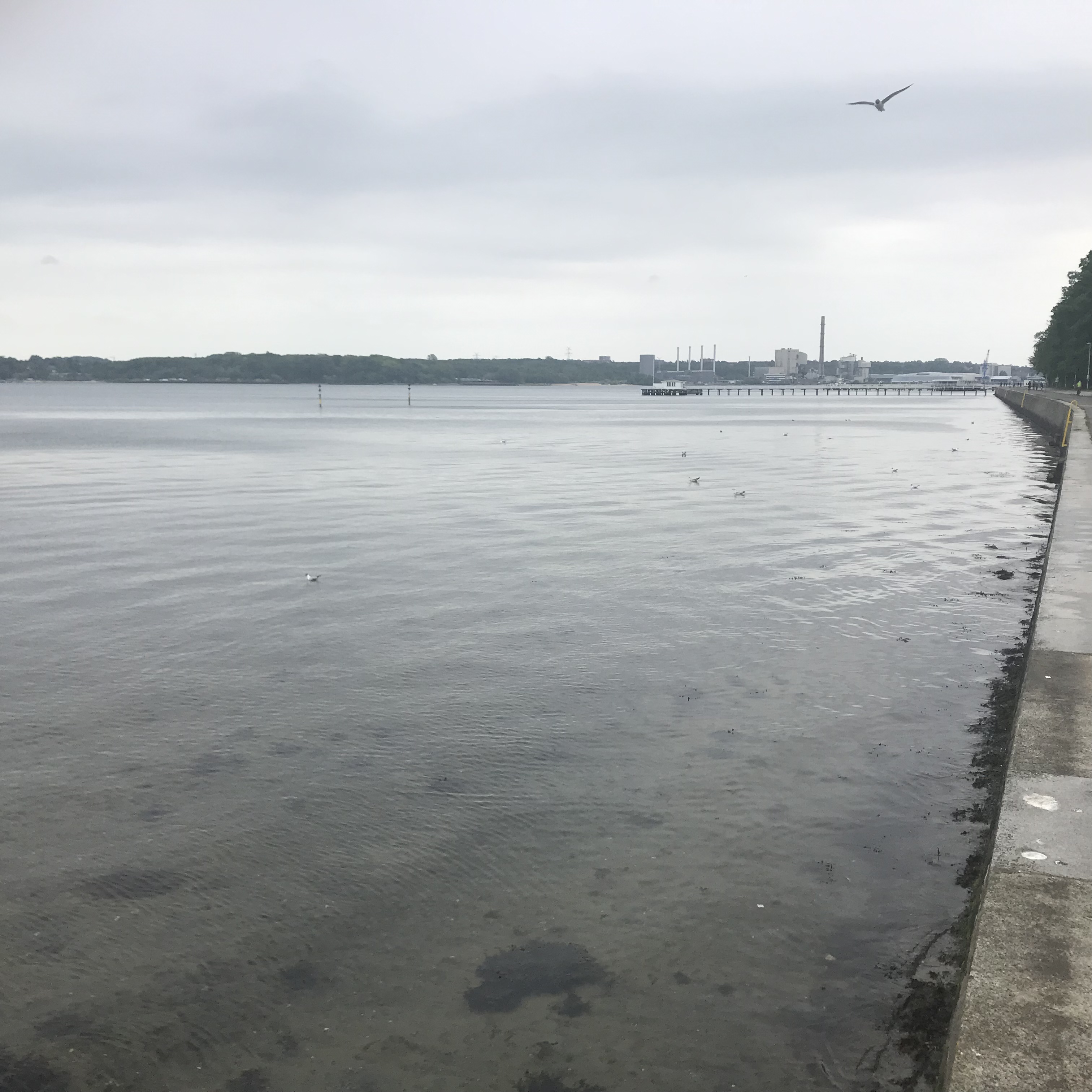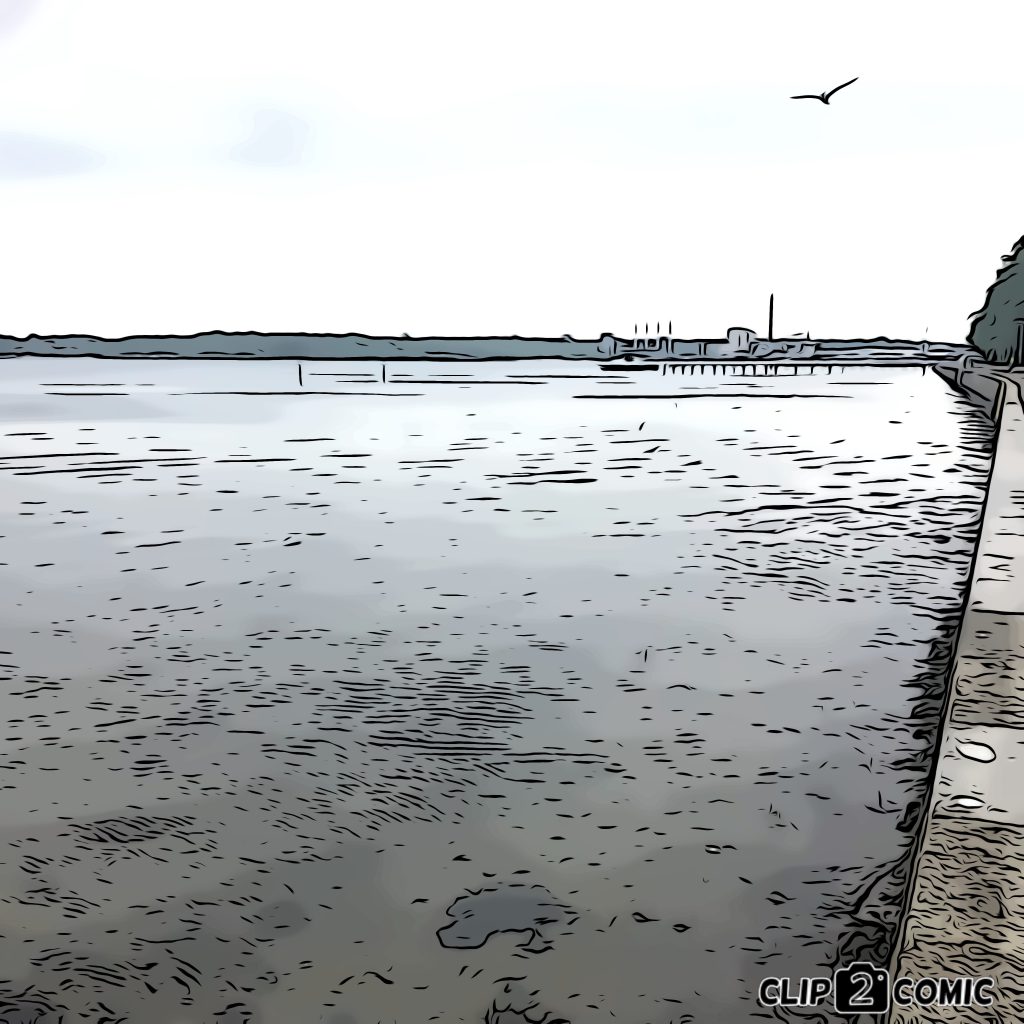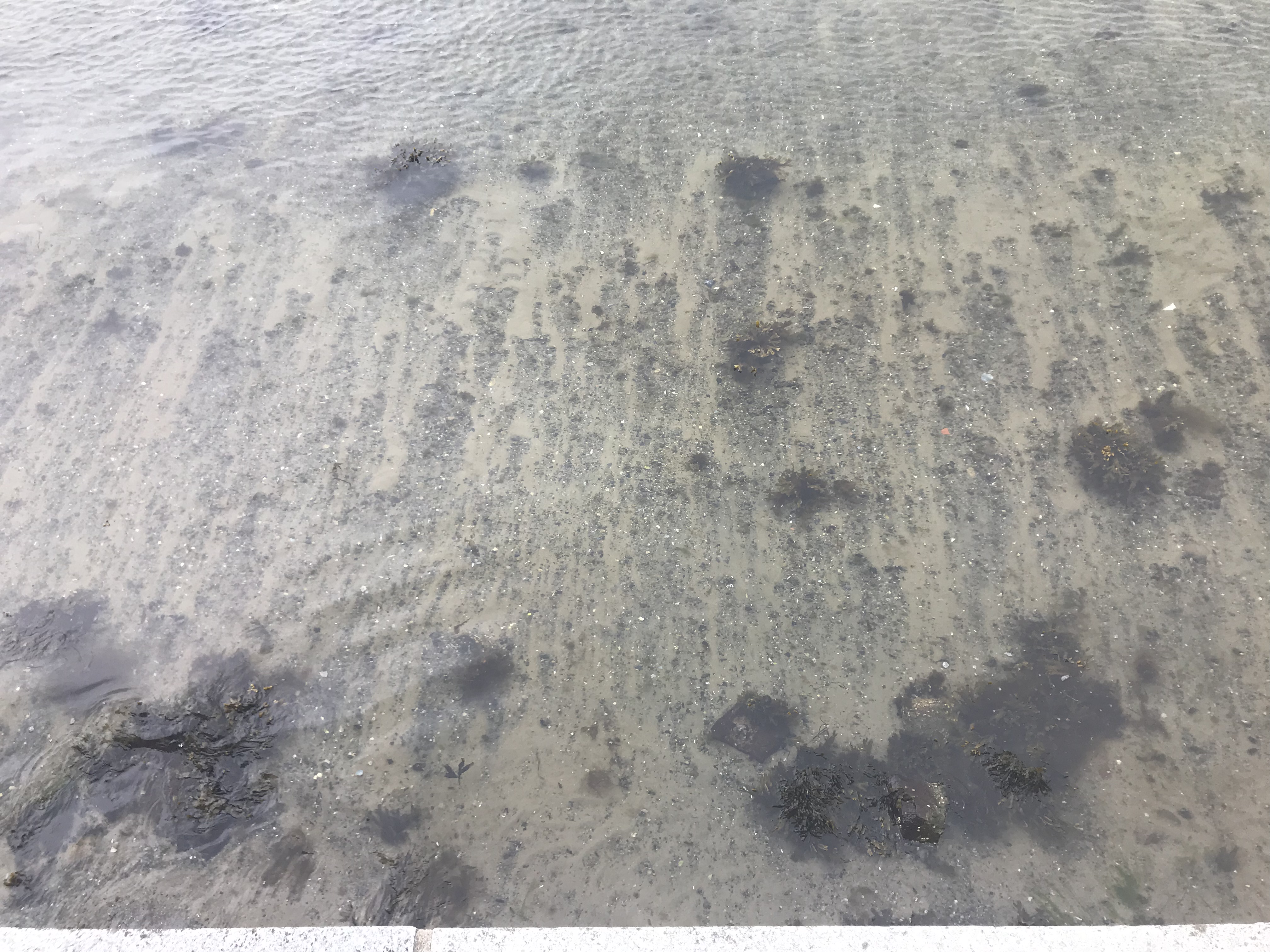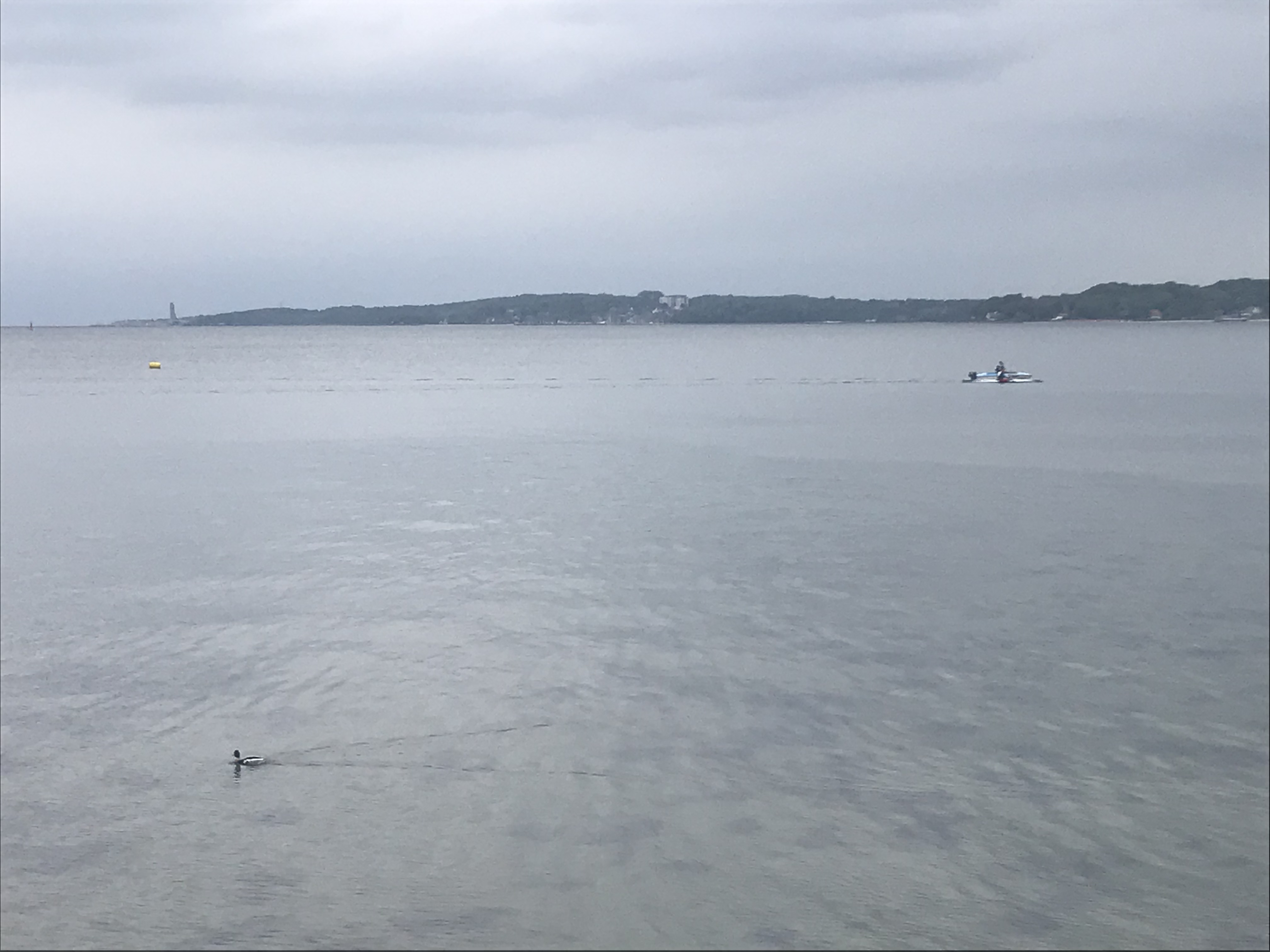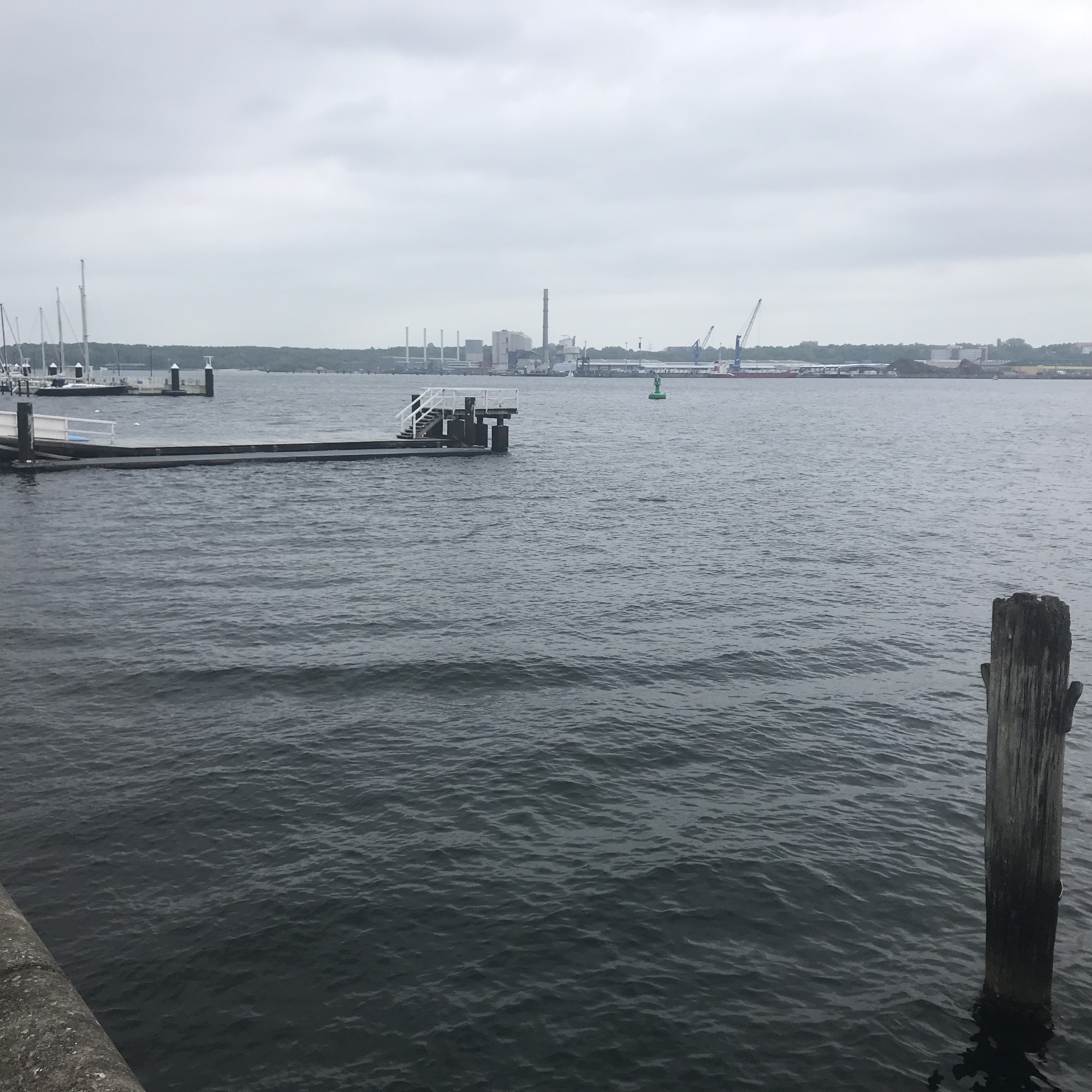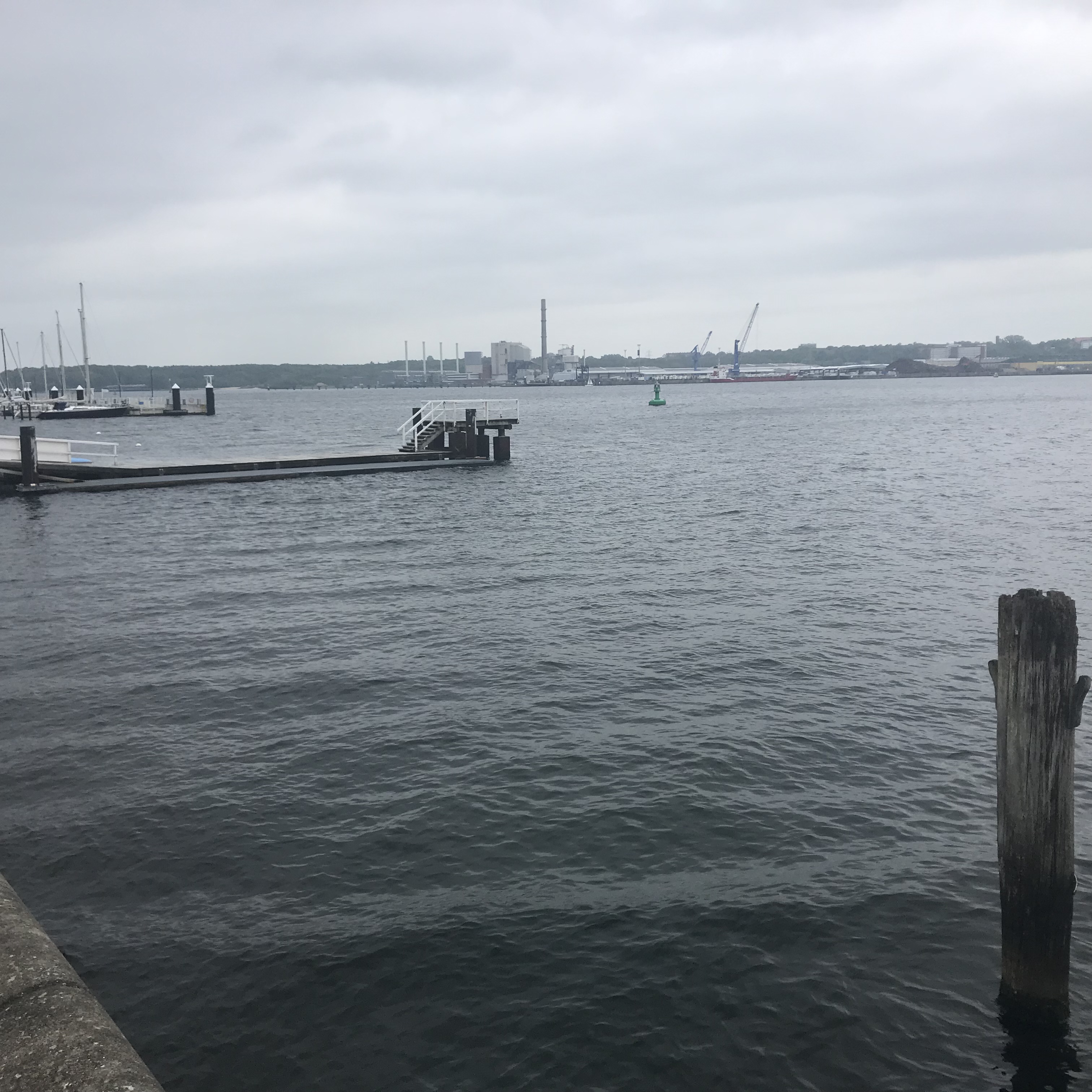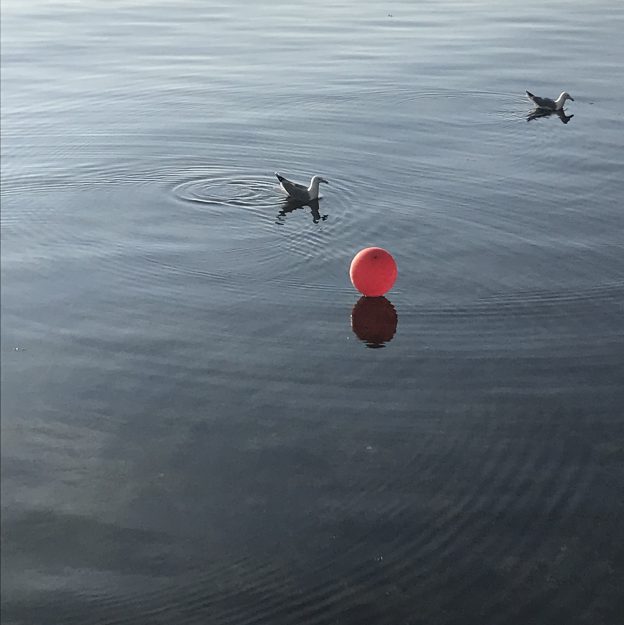Yesterday, I took some pretty pictures of a red balloon floating on Kiel fjord, some seagulls swimming close to it, and — of course, most importantly — the seagull’s waves. You see some that they just made where you can still see how they relate to where they are swimming now. But then there are also these large circles from previous movement, and the origin of those we can only guess. As we see from the seagulls’ wakes, they haven’t been swimming in that direction long, and they started out from a resting position. Maybe the large circles are from when they landed? We can only speculate.
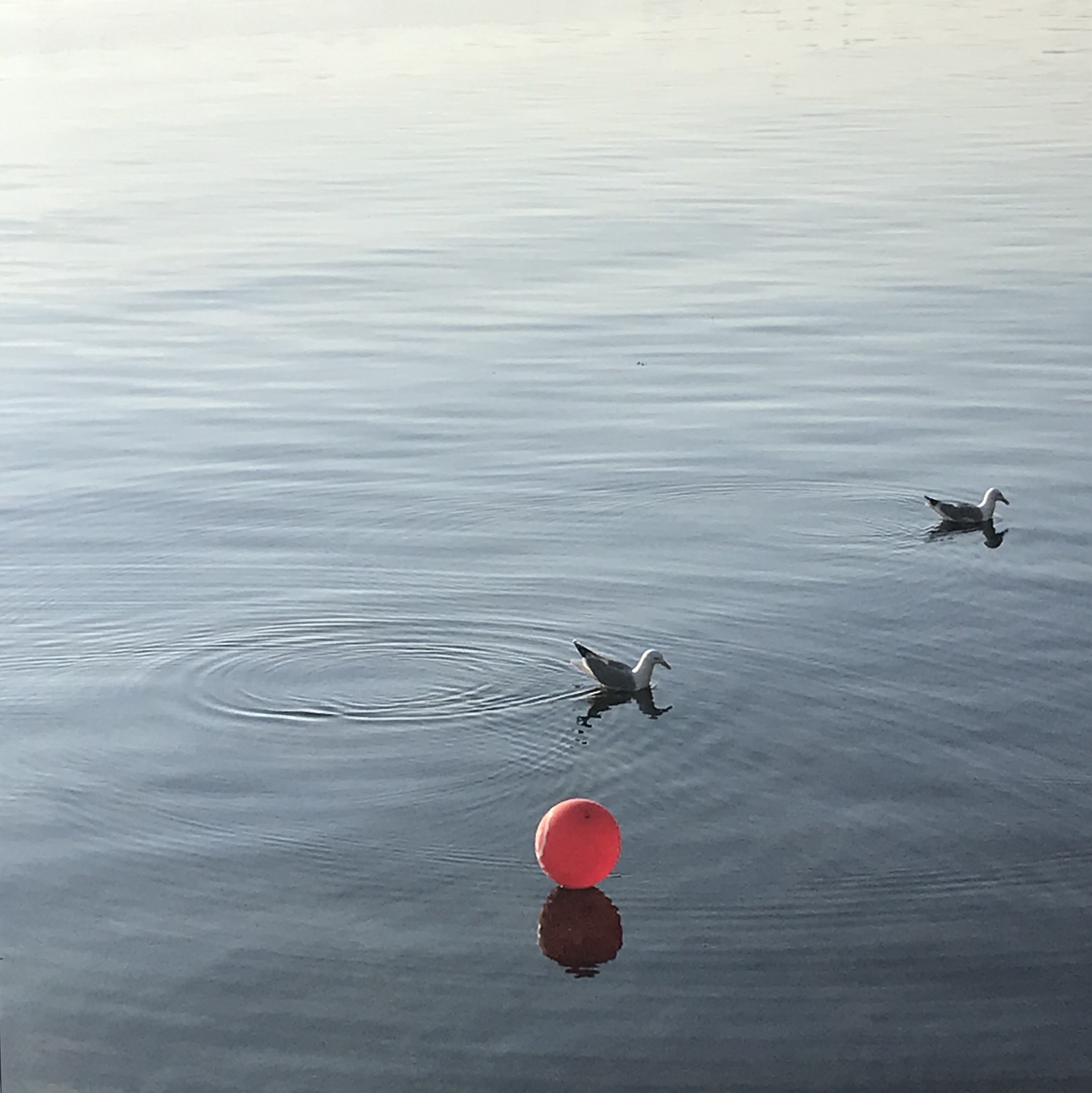
I’m showing you the pictures of the seagulls and the ballon because I think they are pretty, but also to have a reference for what “normal” waves look like. “Normal” meaning that they are waves whose restoring force is gravity.
There is, of course, other kinds of waves.
Check out the picture below. It’s super choppy, but do you see parts that look different? It’s an overall choppy day, so it might be a little difficult to see what I am talking about.
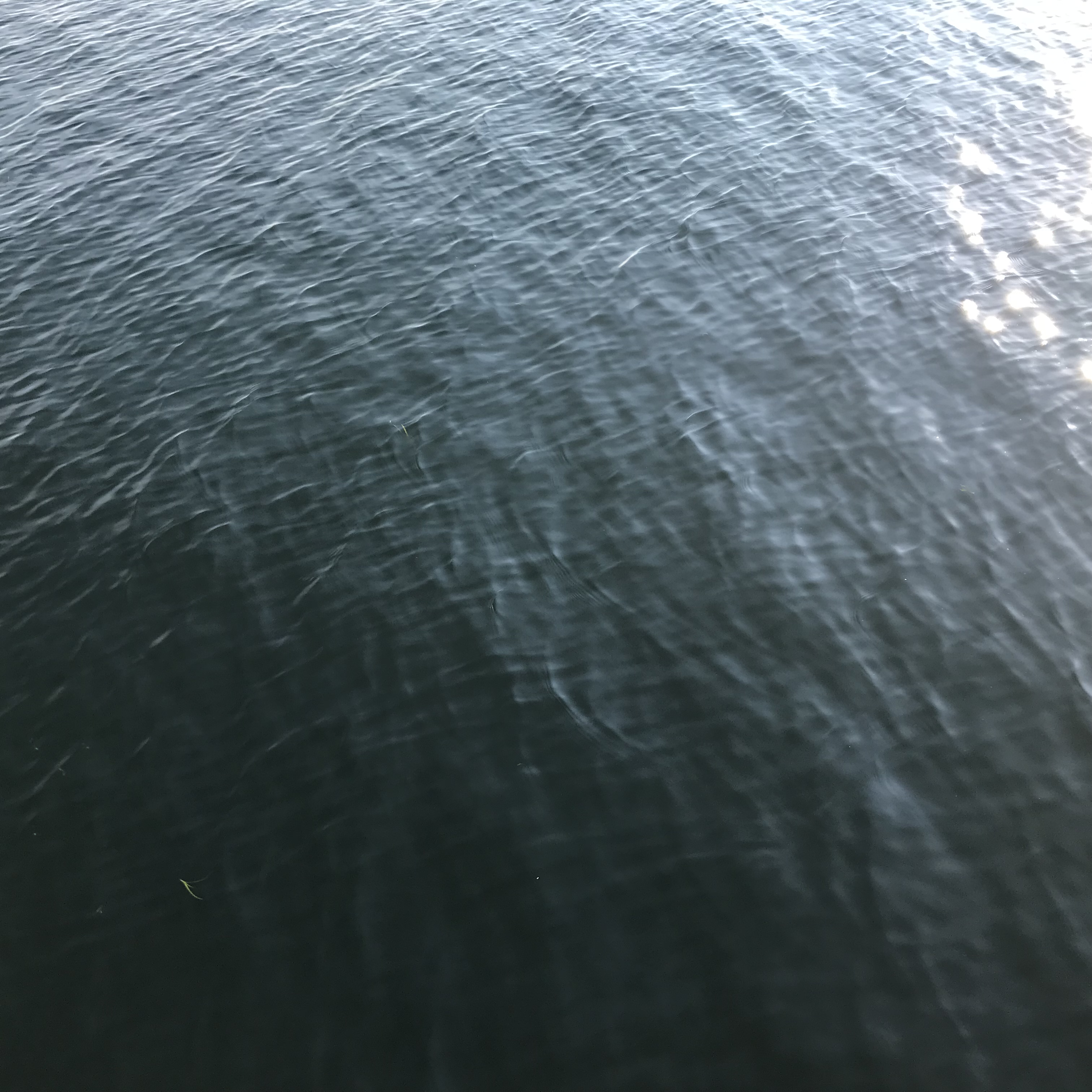
Let’s zoom in to see some capillary wave action! Capillary waves are the ones that are restored by surface tension rather than gravity. They are a lot shorter than “normal” waves, wavelengths are only up to less than 2 cm long! And they often appear as several wave crests right behind each other, like below. Short wavelengths travel faster than longer ones, which is why from a main crest, more and more capillary waves emerge which seem to be bunched up moving right in front of the main crest. Pretty cool, I think!
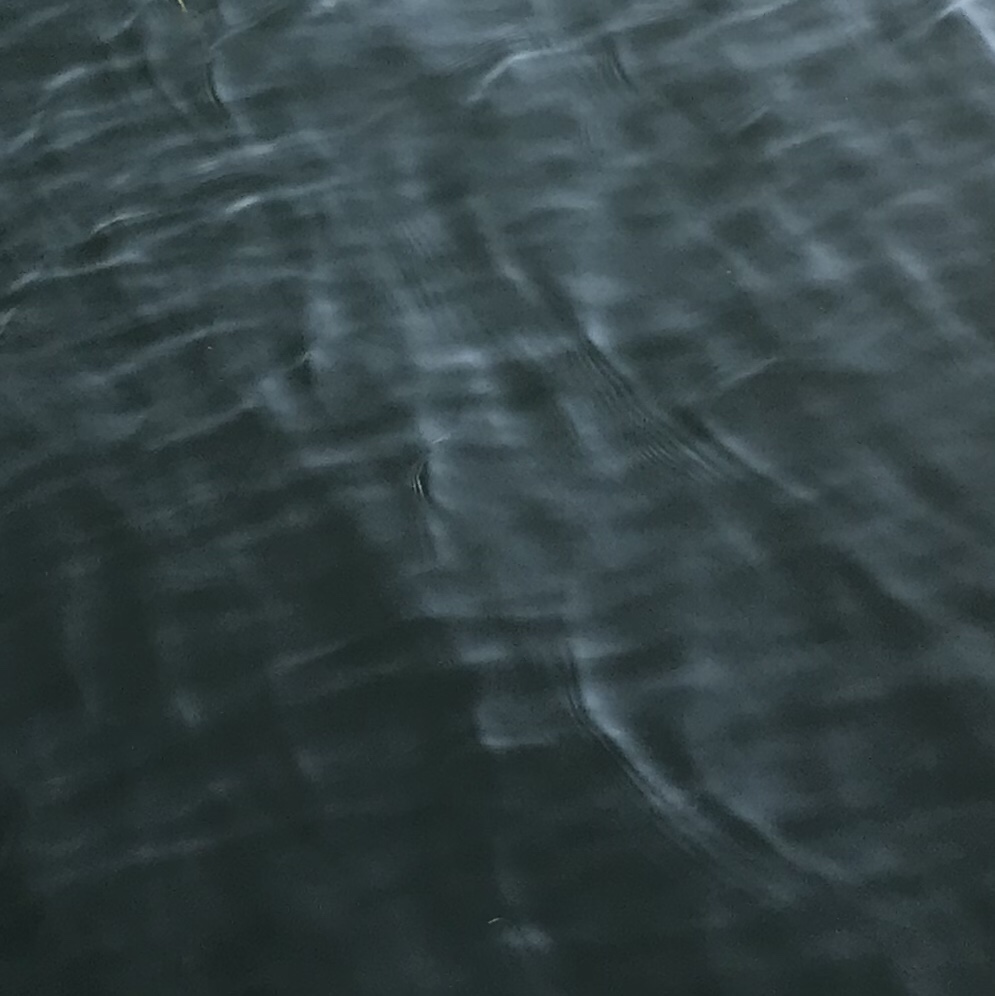
Edit, a couple of minutes after initial publishing this blog post:
I saw a friend use a comic app on Instagram and, of course, went down that rabbit hole. So here is a recap of the pictures as the app sees them below. Do you feel like the waves are easier to see in the comics than in the pictures?
Below, you see the seagulls as they have just started paddling forward, and the large circles are still fairly close to where the seagulls are.
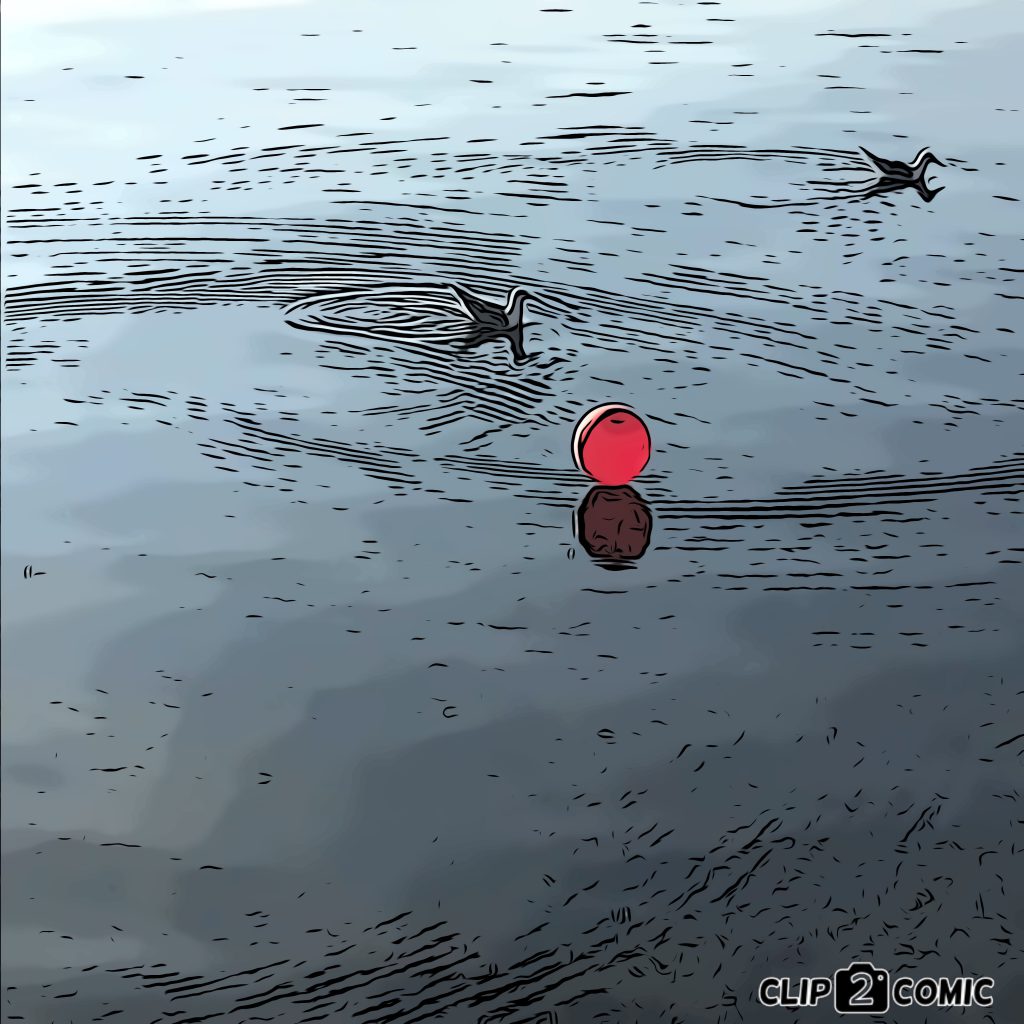
Now the seagulls have swum a little further, but you still see where they initially started out. And you see that the time lag between the two pictures really isn’t that large — the large wave ring hasn’t propagated a lot compared to the balloon (which is also freely drifting, so maybe that’s not the smartest comparison).
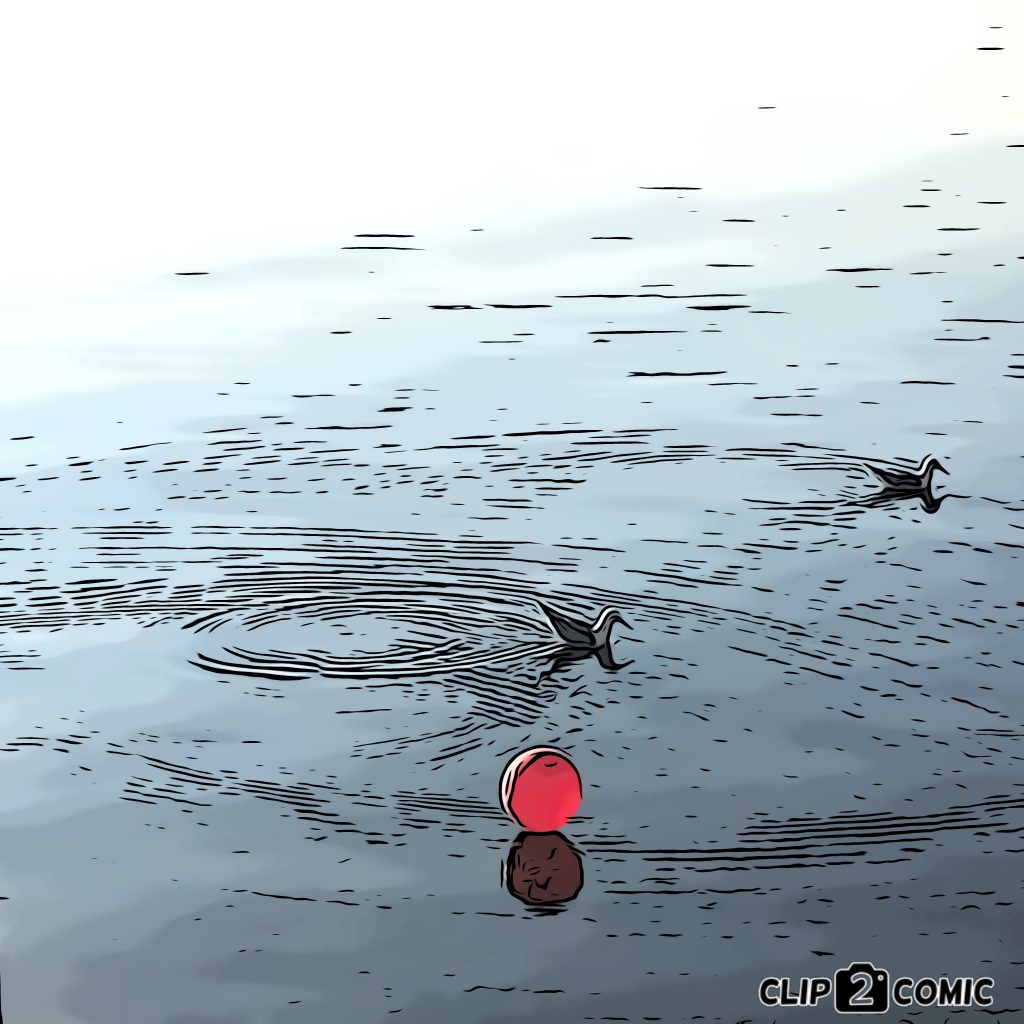
But my capillary waves become a little clearer now, I feel: The bunches of parallel wave crests on the right half of the picture that are now drawn in black (while all the choppy stuff is just shared, but not contoured).
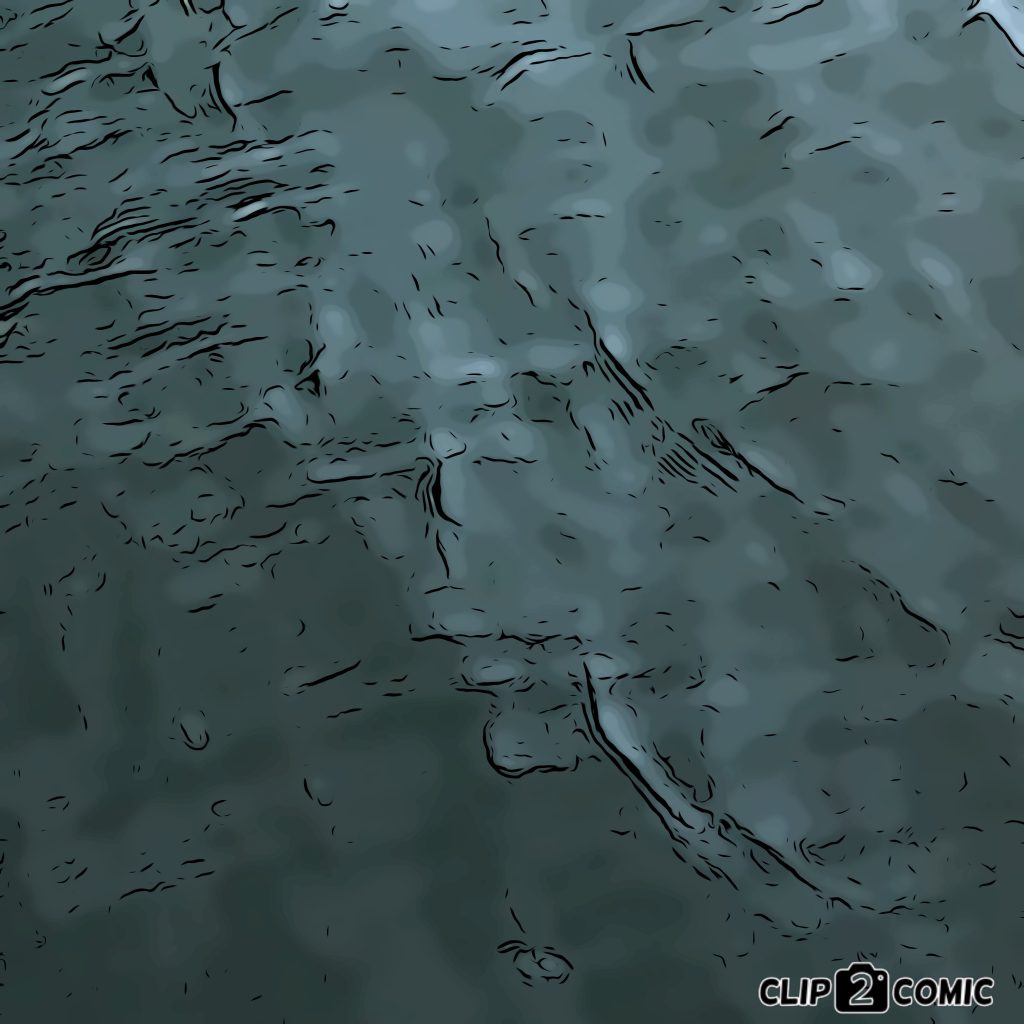
What do you think? Are these pictures helping to show what exactly I am talking about, or is it just as confusing as before, only in a different way?
